- Australia edition
- International edition
- Europe edition
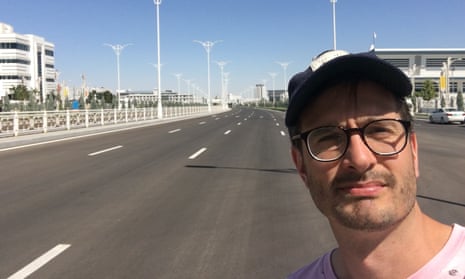

Inside Ashgabat, the flashy but empty 'city of the dead'
Film-maker and ‘dark tourist’ David Farrier visited Turkmenistan’s newly built capital, designed to cope with anything – as long as it’s preplanned
W andering around Ashgabat, I had Land of Sunshine , the song by Faith No More, looping in my head. The capital city of Turkmenistan, is blisteringly dry and hot, dumped in the middle of the desert. It also holds the record for the highest density of buildings made from white marble, which bounce the sun right back in your face, blinding you.
I’d come to Turkmenistan to shoot a documentary series for Netflix called Dark Tourist about offbeat travel destinations. This also led me to Fukushima, Japan, for a spot of nuclear tourism; smalltown America, where I was tortured in an extreme haunted house attraction ; and Medellín, Colombia, where I saw the sights with Popeye, a former hitman for Pablo Escobar.

While researching the show I’d been told that Turkmenistan was “the new North Korea”, a bucket list destination for the daring traveller. I’d heard that the hermit kingdom bordered by Kazakhstan, Uzbekistan, Iran and Afghanistan had an egomaniac leader who hated animals and had an atrocious record with human rights.
Turkmenistan doesn’t exactly embrace a free and open press, so when I entered the country last September, I did so under the guise of a sports reporter. Somehow Turkmenistan had negotiated to host the Asian Indoor and Martial Arts Games, an official Olympic event for which it constructed a $5bn (£3.8bn) village. Huge stadiums, a monorail system, indoor and outdoors sports arenas and giant sprawling highways were surrounded by brand-new hotels, apartments and malls.
Turkmenistan has the world’s fourth-largest natural gas reserves, more than the United States, but it isn’t exactly spreading the wealth. Much of the population outside the capital is impoverished. There was a reason we weren’t allowed to leave the city limits: that would spoil the illusion.

Walking around Ashgabat, blinded by an ocean of marble, I felt terribly alone. Athletes limped around, as security watched on, but this was no Rio, attended en masse by the public. It was very, very quiet. I could see why locals were said to call it the “city of the dead” under their breath.
President Gurbanguly Berdimuhamedov’s smiling image was on the front page of the paper you’re given on the plane flying in, projected on screens over Olympic arenas, and ever-present in the city. Shopping malls sold framed posters of him you could pop on your bedroom wall. If you had a camera in tow, locals refused to talk about their leader. Even if you didn’t, they only nervously said good things. This is a city where political dissent is not allowed. Independent human rights monitors are not allowed into Turkmenistan, but Human Rights Watch notes that torture is still a “grave problem” in its prisons. It’s unknown how many people have been jailed for political reasons, and those locked up have no idea when they will get out – they are simply “disappeared”.
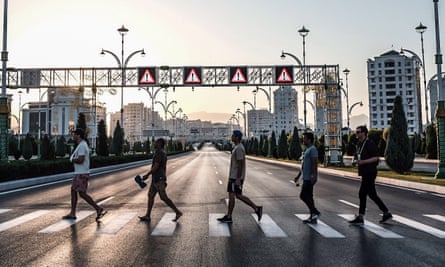
Oppression permeates all parts of life: in preparation for the games, officials forcibly removed air conditioning units from apartment buildings, saying they were an eyesore – leaving residents to deal with temperatures of over 40C.
And don’t even think about being gay in Turkmenistan .
With that in mind, I was curious to see Berdimuhamedov at the games’ opening ceremony. The last time he was at a major sporting event, he face-planted off his horse (state media turned a blind eye). But just before we were due to leave for the arena, after a particularly hot and testing day, I was leaning on my hotel room mirror – and my hand went directly through it.
Bleeding everywhere, my hand sliced open, I made my way down to the lobby. The shocked staff didn’t know what to do. One of them seemed intent on making sure I paid for any cleaning due to the bloody trail I’d left from my room to lift – not to mention a new mirror.
I could see the cracks in the facade of normality. This was a new city that didn’t know how to cope with anything that wasn’t preplanned. Our crew had experienced it all week – just navigating the Olympic Village was fraught with frustration and nonsensical bureaucracy. Guides steered us where they wanted to go. It was illegal to leave the city limits. Public transport made no sense. There was only one way to do anything.
Eventually I ended up in an ambulance. It was like a prop from a film set – there were shelves and medical kits, but they all appeared empty. At the hospital, I filled out forms I couldn’t understand, and hospital staff carried out blood tests. They were friendly and caring, but you could feel the uncertainty in the room. Everything was new. After hours of waiting with a blood-soaked towel wrapped around my hand, I was taken to a brand-new operating theatre and, without warning, given a hearty dose of ketamine.

I left my body and entered a multicoloured box that reflected all the colours of the rainbow back at me. My consciousness drifted around in this box; I thought, “I should get back to my body sometime, or I will be dead.” I reflected on what I’d seen in Ashgabat, all the giant structures that seemed built purely to be awarded world records. The world’s largest indoor ferris wheel. The world’s largest star.
Maybe that’s why Faith No More had been banging around in my head the whole time I’d been in Ashgabat – the band’s logo, two squares superimposed to form a star, also served as this city’s main motif. It was everywhere. The airport, part of that $5bn dollar spend for the games, is shaped like a giant bird – another world record. I’d go there for that airport alone, to be honest.
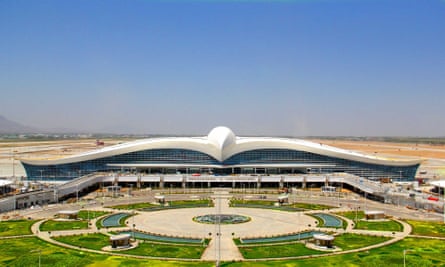
Eventually I blacked out, and then I woke up.
Later, released on to the street, the assistant director and I giddily made our way to the opening ceremony of the Asian Indoor and Martial Arts Games. Still slightly high on ketamine, the lyrics to that 90s song bounced around in my head: “Prepare for a series of comfortable miracles / From fasting to feasting / And life to you is a dashing, bold adventure / So sing, and rejoice.”
Those words seemed so appropriate for this city trying so painfully hard to show off how impressive it was, with its sparkly new buildings and an opening ceremony that put Rio’s to shame. Still somewhat euphoric from the ketamine, I spotted Berdimuhamedov a few stalls over. He was a tiny figure: unimpressive, flanked by various officials. He was grinning his head off. This was his time to shine – if only anyone was watching.
- David Farrier’s Dark Tourist is on Netflix
Follow Guardian Cities on Twitter , Facebook and Instagram to join the discussion, and explore our archive here
- Turkmenistan
- Documentary

Turkmenistan moves towards plugging massive methane leaks

Turkmenistan strongman's son wins presidential vote

Turkmenistan plans to extinguish vast gas crater fire dubbed ‘Gateway to hell’

Turkmenistan dedicates holiday to enormous national dog breed

Turkmenistan leader unveils giant gold statue of local dog

'Edge of catastrophe': report warns firms and governments off Turkmenistan

Papers reveal saga of horse given to John Major by Turkmenistan

Landmark Caspian Sea deal signed by five coastal nations
Comments (…), most viewed.
Dark Tourist season 1, episode 4 recap: ‘The Stans’
By wade wainio | aug 24, 2018.

Episode 4 of Netflix series Dark Tourist takes us to Kazakhstan for nuclear tourism, and Turkmenistan, one of the world’s most paranoid governments.
Central Asia is known for its eccentric leaders, extreme corruption, and secrecy. As our Dark Tourist guide, David Farrier, tells us, it’s perfect for any dark tourist. His first stop is Kazakhstan, which many Americans will only recognize due to Sacha Baron Cohen’s character, Borat. However, it’s a place with a fascinating history, including its links to the old Soviet Union.
Between 1949 and 1989, the Soviets regularly tested nuclear bombs in a place called “the polygon,” in Semey, Kazakhstan. David intends to go right into this area. Along with David is another dark tourist named Andy Drury. David considers him hardcore and addicted to danger. He visits war zones on a regular basis, and not really as a ratings-driven war correspondent or anything like that. He gets a bit of adrenaline rush from it.
light. Related Story. Dark Tourist season 1 premiere recap
More from Netflix
- Snap your fingers, Mattel to release Wednesday dolls and collector sets in 2024!
- Show Snob’s Premiere Review: Watch, Pass, Wait and See (December 4, 2023)
- Show Snob’s Premiere Review: Watch, Pass, Wait and See (November 27, 2023)
- 5 TV Show Advent Calendars you’ll want this holiday season (2023)!
- Miss Face Off? 2 seasons are available to watch on Netflix!
While one may question his motives or even his character, he actually seems like a really nice guy who just wishes to see the world for himself (as opposed to reading about crazy events in a newspaper). In other words, his reasoning is understandable to an extent, even if it’s not something we’d all be crazy about.
After leaving their foreboding hotel, the two set off to a place called Atomic Lake. Why is it called that? Well, it’s actually quite simple. In 1965, a lake was created with an underground nuclear explosion. Wanting to be on-the-nose, people called it Atomic Lake. It’s also a cool-sounding name, right? Their tour guide, Konstantin, tells them that the water is 100 times more radioactive than normal drinking water. Still, they all eat fish from Atomic Lake, and later even go swimming. When Andy asks David, “Why are we doing this?,” David’s answer is both beautifully simple and funny (in the Yogi Berra sense): “I think because we can.” David also remarks, “I’m not sure if we’re having an adventure or just being incredibly stupid.” Either way, there is a thin line between courage and stupidity. Dark Tourist walks that thin line, then crosses it, and we can all watch and wonder why.
The Epicenter
Then the 3 men head off to the epicenter of the Polygon, where at least 456 nuclear devices were detonated. David says it’s one of the most nuclear places on earth, but it could very well be the most nuclear place. Andy’s Geiger counter maxes out at 14, which is even higher than the counters were when David visited Japan’s Fukushima disaster sites.
This is where Dark Tourist takes a very dark turn. Konstantin, who is an officially sanctioned guide, doesn’t want to admit the nuclear tests have had negative health effects. However, a local Pediatrician urges David and Andy to visit a local orphanage to see the actual effects. The two do just that and see firsthand some children with disabilities likely caused by radiation. While some viewers will call it exploitative (and maybe it even is), Andy states that it’s a big lesson for him.
So, yet again, we see the complex dynamics of a show on the dark aspects of life, which can be both humorous and genuinely unsettling. In a way, a show like this is almost obligated to show such things, lest people think these slices of history are all just fun and games. We may be squeamish and may question motives, but we can’t say that Dark Tourist totally ignores reality.
Baikonur Rocket Launch
To add much-needed levity, David Farrier then goes to Baikonur, Kazakhstan, to see a rocket launch. There he meets Lance, a tourist from Ohio who’s waited 5 years to see the Soyuz rocket launch. According to David, Baikonur is the only place on earth where people are still being launched into space. It’s quite a historical location, too.
It’s where Yuri Gagarin was launched, to become the first human to enter space. It is the world’s first space launch facility, so it’s not something only important to the Russians. In fact, it’s a bit reassuring that, at a press conference about the launch, it’s treated as an international event. Spaceflight is a human achievement, rather than something belonging to any nation. When the launch occurs, it is still a sight to behold all these years later.
Turkmenistan’s 2017 Asian Indoor and Martial Arts Games
According to David, Turkmenistan as one of the most secretive, oppressive regimes in the world. This only makes him want to visit the place more. It turns out to be difficult. The only way he can get in? He pretends to be a sports reporter from New Zealand. When he arrives where the games are held, he described Ashgabat as “Las Vegas meets North Korea.” Indeed, the city is eerily empty, and David says that critics are often jailed, persecuted and allegedly tortured. So, when David’s guide, Aziz, tells him not to criticize anything, he takes it seriously. He does hope he doesn’t “sleep talk” anything that might offend President Gurbanguly Berdimuhamedow.
He notes how, despite their spending $5 billion, hardly anyone is on the city streets. David is allowed to film buildings, but filming people is considered off limits. It gives him the opportunity to film a golden statue of President Gurbanguly Berdimuhamedow, depicted riding a horse atop an iceberg.
Next. Dark Tourist season 1, episode 5 recap. dark
After an accident where David leaned on the glass and injured his hand, he had worried about missing the ceremony, and Gurbanguly’s speech. Fortunately, he does make it there in time, and the ceremony is ridiculously over the top and extravagant. He does remark, however, that the money could have probably been spent better on the people’s needs.
Finally, David regrets that his injury preventing him from visiting the Darvaza gas crater (AKA “The Gates of Hell”]. However, Aziz sends pictures of himself cooking some eggs over the Gates of Hell, which is simply comedic gold, no matter who you are or what you believe. While David missed this chance to see the Darvaza gas crater, it should be noted that he could find similar locations. While the Gates of Hell have burned since 1971, the “Eternal fire” in Baba Gurgur, Iraq, is said to still be burning after 2,500 years. Keep on burning, baby!
That’s it for this Dark Tourist recap. What are your thoughts? Let us know in the comments!
The Disaster Zone of Netflix’s Dark Tourist
The new eight-part series supposedly travels to the most mad, macabre, and morbid places in the world.

The host of Dark Tourist , David Farrier, is likened in the final episode of the new Netflix travel series to a kind of budget Louis Theroux, which he considers a compliment. Like the legendary British documentarian, Farrier is lanky, awkward, frequently befuddled, and undeniably charming (he hails from New Zealand, and most recently co-directed the 2016 documentary Tickled ). His signature outfit is a button-down shirt over a pair of pink, pineapple-patterned shorts. It’s hard to marry the conceit of Dark Tourist —which is that Farrier is pursuing his dangerous fascination with all things “mad, macabre, and morbid”—with the show itself, which often feels like the world’s most genial librarian has accidentally ended up on a day trip to an Elite Hunting Club hostel in Slovakia.
It’s a disconnect that Farrier plays up throughout the eight episodes of Dark Tourist , which see him seeking out some of the world’s most disconcerting travel experiences. In Mexico City, while reporting on a sinister-sounding cult that worships death, Farrier jokes about a noisy exorcism drawing complaints from the neighbors. At a World War II reenactment in England, he refers to people who dress up as Nazis as “a pretty big, swastika-wearing elephant in the room.” Intermittently, Farrier offers up some half-hearted bromides to justify his misadventures. After injuring his hand in Turkmenistan and being injected with ketamine by doctors who appear not to tend to his wound at all, Farrier concludes, “Sometimes … dark tourism is the total realization of just how good I’ve got it back home.”
Is that what dark tourism is? An opportunity for thrill-seeking, cash-privileged Westerners to feel better about their mundane lives by trawling through global hot spots of genocide, catastrophe, and authoritarianism? In the first episode of Dark Tourist , Farrier categorizes the practice he’s investigating (or indulging in, it’s never entirely clear which) as “holidays in war zones, disaster sites, and other offbeat destinations .” That latter clause ends up doing a lot of work on the show’s behalf, because Dark Tourist , it transpires, is less often a travelogue than a voyeuristic trip into the grimmest regions of the human psyche. Serial killers, vampire cults, white separatists, oppressive warlords, haunted-house sadists—all feature in Farrier’s bumbling, affable narratives.
But there are other stories too, and that’s where the show’s hazy self-definition becomes troubling. It’s easy to comprehend the “darkness” in white South Africans prepping for a biblical race war, or in a dollar-store cult leader in New Orleans who drinks human blood, or in a military-run shooting range in Cambodia where tourists can pay to blast live animals with rocket launchers. But when Dark Tourist visits a remote part of Indonesia known for its elaborate funeral rites, or a life-size Noah’s Ark in Kentucky, or a part of Mexico City where a death saint is revered, the show’s framing takes things that are strange or simply unfamiliar and implies that they’re sinister. The best travelogues—Anthony Bourdain’s Parts Unknown in particular—emphasize connection, despite language, despite difference. Dark Tourist does the opposite. It seeks out places and people who are bizarre, unusual, or just downright tacky, and it urges you to recoil at them.
Toward the end of the first episode, Farrier goes on a tourist experience by the Mexico-U.S. border, which offers an immersive re-creation of what it’s like to try to cross into America illegally as a migrant. The trip starts in darkness, as the group is screamed at by the masked man running the show, and proceeds as the dark tourists cross treacherous terrain, keeping eyes out for people pretending to be armed robbers and border-patrol officers. “It’s a weird role-playing experience that for six madcap hours allowed us to slip in and out of a very different reality,” Farrier narrates in voice-over. “At times it was entertaining … but in the end I got the message. For real migrants this is never fun.”
It’s a conclusion that feels more like a disclaimer than a genuine moment of self-awareness. When it isn’t pursuing the macabre, Dark Tourist is all about trying other people’s tribulations on for size. In the second episode, Farrier and a tour group visit an irradiated Japanese ghost town deserted after the Fukushima nuclear disaster. While the government has officially declared the town safe, Farrier explains, its former inhabitants aren’t in a rush to return. As the tour moves through the area, the Geiger counters the tourists hold register shockingly high levels of radiation around them, to the point where they finally seem uncomfortable. “Suddenly nuclear tourism doesn’t seem like such a great idea,” Farrier quips.
The term dark tourism was coined in 2000 by two academics, John Lennon (not that one) and Malcolm Foley, who together published a book investigating the increasing prevalence of “tourist interest in recent death, disaster, and atrocity.” While pilgrimages to historical sites involving death have long played a role in tourism, they write, the late-20th and early-21st centuries saw a surge in curious travelers intentionally seeking out what the sociologist Chris Rojek characterizes as “fatal attractions.” In 2011, the British comedian and writer Dom Joly published a book called The Dark Tourist , in which he detailed his travels to unconventional locations including Chernobyl and North Korea.
Although Joly’s book bears notable conceptual similarities to Dark Tourist (so much so that he complained bitterly about the show on Twitter), Joly’s attitude toward dark tourism is slightly different. On his travels, he recounted for The Independent , he realized that “all these places that were supposedly off-limits or dangerous were always fascinating and often incredibly good fun,” almost entirely because of the people he met. Dark tourism for Joly wasn’t about visiting difficult places in the world and grimacing at their horror; it was realizing that “human life always survived and often flourished under the most extreme of circumstances.”
In rare moments, Dark Tourist (the show) summons some sense of this appreciation for how resilient people can be. On a bicycle tour of the Alexandra township in South Africa, Farrier gets off to a bad start by focusing on the area’s reputation for gun crime, and tells his guide (who lives there) that he’s never been on a “slum tour” before. Then, realizing his rudeness, he apologizes profusely. He spends time getting to know a local named Stacey who’s a star in the extreme sport of spinning , and he expresses admiration for how Alexandra residents have created such a “vibrant and unique community.” But the segment’s brevity—most places Farrier visits get about 10 minutes a show—doesn’t allow for more than a superficial teachable moment.
More often, Dark Tourist treats its subjects like curios in a junk shop, casually examining them from different angles and then discarding them. Visiting Myanmar—in an episode that somehow makes no mention whatsoever of the regime’s human-rights abuses and persecution of Rohingya Muslims—Farrier tours the new $5 billion capital city and finds it disappointingly pristine. In a white-separatist town in South Africa called Orania , he interviews visitors who praise the community’s “culture,” and how “clean and safe” it is, but he declines to press them further on what they’re actually appreciating. His offscreen narration is limited to the flimsiest of platitudes (“On this trip I’ve flirted with radiation, desolation, and death … and somehow it’s made me even more happy to be alive”), rather than the nuanced, difficult context that’s required.
Foley and Lennon theorize that there are several major reasons why dark tourism is flourishing. One is the desire to better understand and connect with history, which is why people visit battlefields and concentration camps. Another is a subconscious desire to get closer to death for people from Western cultures that are increasingly removed from it. Farrier eats meat, but he cringes when animals are slaughtered in front of him. In Toraja, Indonesia, he watches as corpses are lovingly unwrapped and redressed in front of him, remarking that one is the first dead body he’s ever seen. It’s a moment of accidental insight that the series declines to excavate.
What’s more characteristic of Dark Tourist is a ghoulish but superficial kind of thrill seeking, as Farrier chats with Charles Manson’s best friend, and with Pablo Escobar’s assassin, and with the proprietor of a John F. Kennedy death tour who insists he’s a historian. The show seeks these people out, it hints, not because they have worthwhile things to say, but because this is what viewers want to see. We, after all, are the people watching a Netflix documentary series about the most supposedly bizarre, grotesque, and disturbing places in the world. Dark Tourist is just another guide on the trip, cashing in on people’s morbid curiosities without caring what real wisdom it could impart if it tried.

- dark tourism
- Andaman & Nicobar
- Bosnia & Herzegovina
- Channel Islands
- Cyprus (North)
- Czech Republic
- Dominican Republic
- Easter Island
- El Salvador
- Falkland Islands
- French Guiana
- Great Britain
- [Nagorno-Karabakh]
- Netherlands
- New Zealand
- Northern Ireland
- North Korea
- Philippines
- South Africa
- South Georgia
- South Korea
- Switzerland
- Transnistria
- Tristan da Cunha
Turkmenistan

- disclaimer & privacy policy
© dark-tourism.com, Peter Hohenhaus 2009-2023
The Definitive Voice of Entertainment News
Subscribe for full access to The Hollywood Reporter
site categories
‘dark tourist’: tv review.
New Zealand's David Farrier takes Netflix viewers around the world on vacations too dark, blood-drenched, radiation-filled and tragedy-adjacent for the average holiday-goer in 'Dark Tourist.'
By Daniel Fienberg
Daniel Fienberg
- Share this article on Facebook
- Share this article on Twitter
- Share this article on Flipboard
- Share this article on Email
- Show additional share options
- Share this article on Linkedin
- Share this article on Pinit
- Share this article on Reddit
- Share this article on Tumblr
- Share this article on Whatsapp
- Share this article on Print
- Share this article on Comment
It isn’t until the eighth episode of New Zealand journalist and filmmaker David Farrier’s new Netflix series, Dark Tourist , that somebody mentions Louis Theroux.
As befits the oddness of Dark Tourist , the interview subject who aptly brings up the British documentarian behind Louis Theroux’s Weird Weekends and My Scientology Movie , is Michael Channels, who coasted a wave of fame last fall as a 30-year-old pen pal to Charles Manson and alleged owner of a Manson will.
Air date: Jul 20, 2018
Amused in this context to be asked why he was trying to be Louis Theroux, Farrier laughs and agrees: “I’m like the cheap version of Louis Theroux.”
Jokes aside, Farrier ( Tickled ) is probably correct that Dark Tourist plays as a slightly less in-depth version of the sort of quirkily humorous, frequently murky immersive nonfiction journeys Theroux has built a career upon. That’s probably OK, because Theroux isn’t so prolific that there isn’t room for the kind of investigation-meets-comedy-meets-light-anthropology that Farrier practices in Dark Tourist . The series isn’t always focused or consistent, but it’s got ample strangeness and droll laughs, and every once in a while it packs an unexpected emotional punch.
The lack of consistency is hardly surprising. Farrier seems to begin every episode, before a wonderfully macabre animated credit sequence, with a very slightly different definition of what “dark tourism” even is. That definition is usually so strained by the end of 40 minutes that it takes bent-over-backward voiceover narration to impose a theme on his adventures.
Related Stories
'in search of': tv review.
So what is dark tourism? It’s the phenomenon of people vacationing in places associated with death and destruction, though Farrier even expands the definition to encompass general “strangeness” as well. He never gets quite so far as to open up the definition to include any trip too inconvenient for any normal person lacking the resources provided by a TV budget, press credentials and the door-opening magic of a video camera. Probably he should. There’s nothing all that dark about attending a press conference and rocket launch at Baikonur, the birthplace of the Soviet space program. Even Farrier’s attempt to add morbidity to the equation by musing that the rocket in question looks technologically behind the curve doesn’t change the fact that this particular expedition, though it might be complicated or out of the logistical reaches of your typical traveler, is something that most people would just describe it as cool.
Mostly, Farrier keeps within a more justifiable range. Over the eight episodes, he continent-hops around the globe, and a number of recurring “dark tourist” variations occur. In the two episodes in the United States, for example, serial killer tours catch his attention, following in the footsteps of Jeffrey Dahmer in Milwaukee and Charles Manson in Los Angeles. He’s got a thing for areas of high radiation and wanders, Geiger counter clicking aggressively, through a nuclear test site in Kazakhstan and dangerously close to the radiation-tainted ruins of the 2011 earthquake in Fukushima. Doomsday preppers pop up in multiple episodes, whether as virulently racist, distressingly friendly white separatists in South Africa or more garden-variety American extremists in Virginia.
Farrier likes hastily evacuated ghost towns, whether they were cleared after military conflicts in Cyprus or an economic collapse in Japan. He’s also a sucker for eerily tourist-free capitals erected at tremendous expense by dictatorial regimes, be they in Myanmar or Turkmenistan. When watched in a batch, the episodes gives you a feel for Farrier’s preferred rhythms. He usually starts with a touristy version of a ritual and then wonders if what he just did was too touristy before booking an intimate visit with a practitioner of esoteric customs. Another pattern involves the frequency with which Farrier walks into a situation involving animal sacrifice and gets squeamish.
Beyond revealing his repeated tropes and platitudes, the episodes collectively showcase Farrier’s sense of humor. He’s extremely droll, a tactic that allows him to outright insult more than a couple of subjects, who simply don’t notice. He’s also very good at setting himself up as a fool so that he can learn a valuable lesson, like when he accidentally calls a South African township visit a “slum tour” before apologizing extensively in the next segment, or when he narcs on his tour’s coyote in a Mexican border-crossing stunt filled with moments both harrowing and giggle-inducing. He’s intellectual and foolhardy in nearly equal measure, slightly favoring the latter approach.
Farrier is unquestionably voyeuristic and exploitative in certain moments, with a corpse-exhuming Indonesian funeral ceremony providing the most eyebrow-raising bits. But you sense he’s doing this to emphasize a characteristic of dark tourism, and he tries to expose his own ignorance and dig deeper. He doesn’t always succeed. Sometimes the ingrained colonialism of his visits becomes unavoidable, even for someone who’s himself a resident of a former colony. But he tries.
'Who Is America?': TV Review
Farrier is very good at recruiting unlikely and outrageous tour guides, like Pablo Escobar’s favored assassin during a trip to Colombia, or insinuating himself into a situation in a way that gives astounding access, like when a chat with a disturbing British museum operator ends with a phone call to the notorious criminal played by Tom Hardy in the movie Bronson . I often wished he would spend more time trying to learn more about his fellow tourists, since those are the relationships that yield the most powerful beats, like the climax of that trip to the atomic wasteland of Kazakhstan.
It’s possible that a clearer definition of dark tourism will evolve as Farrier keeps going and keeps refining. I’m still waiting for an understanding of whether, for example, a Jew traveling to ghettos and concentration camps in Eastern Europe is a dark tourist or a cultural tourist or something Farrier is wisely leaving out of the purview of this show.
These eight episodes are a reasonable starter set of vacations you’d never want to go on, tours you’d be too perplexed to take, museums too weird to visit and a few places just enticing enough to make you investigate a booking for your next holiday. Not bad for a cheap version of Louis Theroux.
Premieres Friday (Netflix)
THR Newsletters
Sign up for THR news straight to your inbox every day
More from The Hollywood Reporter
‘game of thrones’ showrunners reveal their favorite deaths of the series, ‘death and other details’ canceled at hulu, ‘the walking dead’ franchise’s best characters, ranked, ‘fraggle rock’ puppeteers weigh in on larry david’s attack on elmo, ‘parish’ review: giancarlo esposito is the only reason to check out amc’s derivative crime drama, gypsy rose blanchard announces separation from husband 3 months after leaving prison.

Dark Tourist
From a nuclear lake to a haunted forest, journalist David Farrier visits unusual -- and often macabre -- tourism spots around the world.

Latin America
David meets Pablo Escobar's enforcer in Colombia. Later, he witnesses an exorcism in Mexico and participates in a faux illegal border crossing.

David visits a town hit by heavy radiation, hikes through a supposedly haunted forest and explores an abandoned island with its former residents.
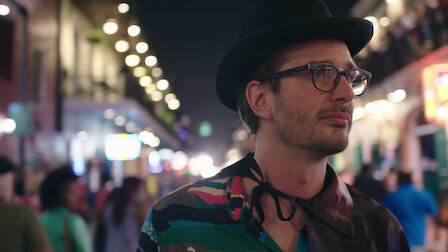
United States
David meets a Jeffrey Dahmer enthusiast in Milwaukee, takes two tours dedicated to JFK's assassination in Dallas and dines with vampires in New Orleans.
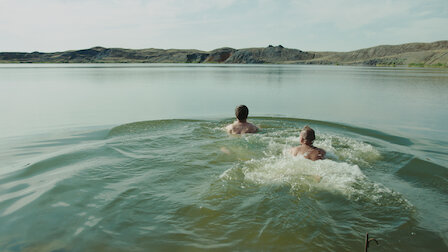
In Kazakhstan, David and a fellow dark tourist swim in a lake formed by a nuclear blast. Later, David's trip to Turkmenistan doesn't go as planned.
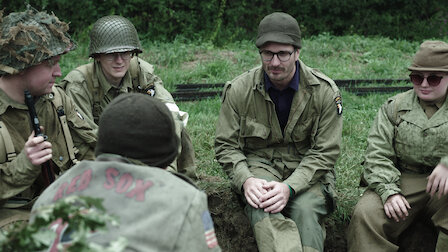
After participating in a World War II reenactment, David visits a disturbing museum. He then travels to Cyprus in hopes of seeing a forbidden city.
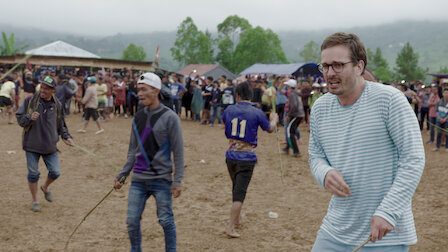
South East Asia
In Cambodia, David is offered the chance to shoot a cow. Later, he tours Myanmar before witnessing the cleaning of a mummified corpse in Indonesia.
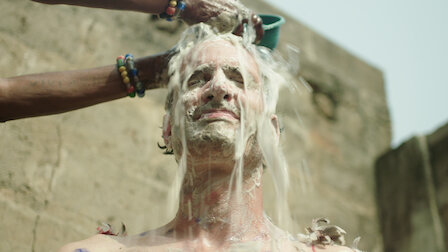
David attends a voodoo festival in Benin, visits an infamous area of Johannesburg and speaks with white South African separatists.

Back in the USA
Charles Manson's pen pal gets confrontational in an interview. Also, David prepares for the end of the world and visits an extreme haunted house.
More Details
More like this.

Coming Soon
Questions? Call 1-844-505-2993
- Help Centre
- Media Centre
- Investor Relations
- Redeem gift cards
- Buy gift cards
- Ways to Watch
- Terms of Use
- Cookie Preferences
- Corporate Information
- Legal Guarantee
- Legal Notices
- Only on Netflix
- Advert choices
Netflix Norway
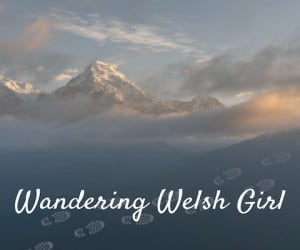
Dark Tourism Destinations In 2024
In this post I delve into the world of dark tourism . I describe 10 popular dark tourism destinations from around the world.
Finding myself with some enforced indoor time during the pandemic, I discovered the Netflix series Dark Tourist . It came recommended by fellow bloggers, so I had to see what all the fuss was about.
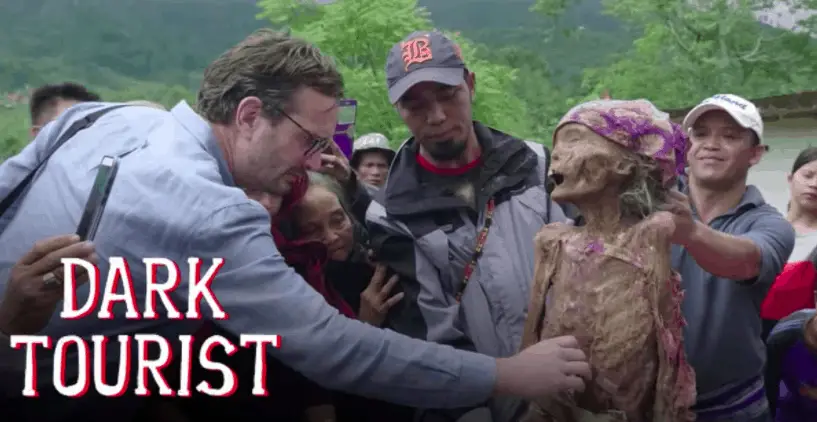
Disclaimer: Some links in this article are affiliate links, which means that if you purchase through them I receive a small commission, at no extra cost to you. This helps cover the cost of running this blog. Thanks for your support!
The Louis Thereaux-esque host travels the world in search of locations fitting the bill of dark tourism. That is to say, sites that are typically associated with death and tragedy.
The series itself is quite educational though at times I found it a little uncomfortable. I understand that the host is angling for the dark humour approach, but often I found his reactions a little rude and disrespectful.
However, my opinions aside, it’s certainly a series worth exploring. It also got me thinking about some of the dark tourist sites I’ve visited.
Much to my surprise, I discovered I’ve been to quite a lot!
I immediately questioned whether I sought out these destinations and was myself a dark tourist . However, it seems I visited most of these sites whilst running overland tours so I was officially just doing my job.
I guess that makes me feel a little better…
Dark Tourism Definition
Dark tourism involves visiting places associated with negative events, often involving human tragedies or disasters.
This type of sub-tourism has been growing in popularity of late but is certainly not a new phenomenon. For example, we’ve always visited memorial sites to pay respect for those who lost their lives and honour their memory.
In London you can find the popular tourist attractions of the London Dungeons, the Clink Torture museum and the Jack the Ripper museum, all within walking distance of each other. None of which are particularly light hearted subjects.
It seems people have always been intrigued by the macabre . Like watching a horror movie with your hands in front of your face. You don’t want to look and yet you can’t really help it.
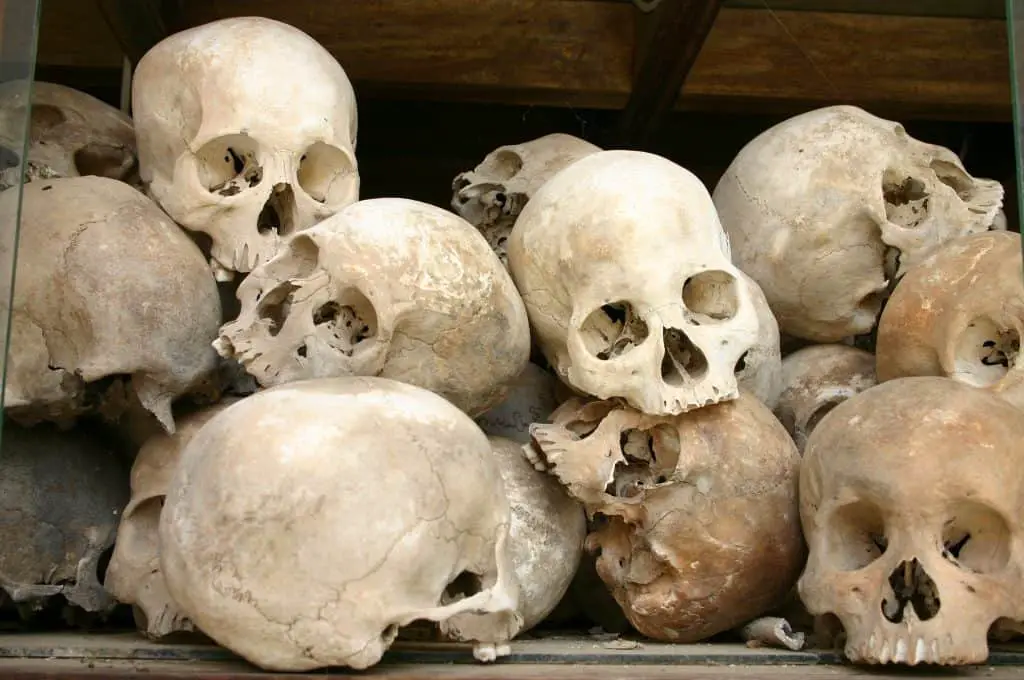
10 Dark Tourism Destinations
I questioned whether I should write this post as I don’t want to be disrespectful to those that have lost their lives at these sites . However, some of these sites are major tourist draws for their respective countries, so I feel like it would be wrong to simply ignore.
So with that in mind, here are 10 of the most memorable dark tourist locations I have visited around the world .
1. Kigali Genocide museum, Rwanda
In 1994, the small African country of Rwanda became the location for one of the most recent and brutal genocides in history. On the 10th anniversary of the genocide in 2004 the country opened the Kigali Memorial Centre in the country capital of Kigali.
This memorial is the site of a mass grave and museum. The museum spends a lot of time explaining the complex history that led to the genocide in the hope that through learning this, it will never happen again. It also contains many graphic videos and images which are very hard hitting.
A visit to this memorial is certainly not an easy one but a must for any visit to Rwanda. Rwanda is a remarkable country and a great example of how the human race can bounce back from such horrible tragedies. It’s also home to the incredible mountain gorillas which you can read more about here.
More recently I visited the Armenia genocide museum in Yerevan, Armenia. Again, whilst not being a pleasant experience, this museum is very well done and worth visiting on a trip to Yerevan.
2. Death Railway Bridge at Kanchanaburi, Thailand
During World War II, POWs under Japanese control were put to work constructing the Burma Railway. Working in horrific conditions, almost half of the prisoners working on the railway died during its’ construction.
At Kanchanaburi there is a railway bridge built over the river Kwai. This bridge was part of the Burma Railway line and has become a popular tourist attraction for those looking to learn about this dark period of Thailand’s history. The construction of the bridge was famously portrayed in the film The Bridge on the River Kwai .
Spolier alert : Technically this bridge is neither the original bridge (since it was bombed by allied forces in 1945) nor the bridge depicted in the film. Even the river below only became know as the River Kwai (it was previously the Mae Klong) in order to please tourists who came looking for “the bridge over the River Kwai”.
In Kanchanaburi, just across from the railway station is the Kanchanaburi War Cemetery, dedicated to the POWs who died here. There is also the War Museum and JEATH War Museum located close to the bridge. A 90 minute drive from Kanchanaburi will bring you to Hellfire Pass, which is a war memorial in the form of a jungle walk.
Of course there are many more touching war memorials located around the world, including the Somme in France and Gallipoli in Turkey .

3. Choeung Ek Killing Field and S21 Prison, Cambodia
Any traveller to Phnom Penh will almost certainly visit one of these dark tourist sites. Nobody really knows how many people were killed during the Cambodian genocide under the orders of Pol Pot, but it’s estimated to be anywhere between 1 and 3 million.
The Killing Fields refer to a number of sites where people were killed and buried by the Khmer Rouge. The most famous of these is Choseng Ek, just outside Phnom Penh. An audio guide leads visitors around the site, explaining the harrowing acts that were carried out here.
In Phnom Penh itself there is another memorial to the Cambodian genocide called S-21. This high school was converted to a prison by the Khmer Rouge and used as a torture and execution centre. It’s believed that of the 14000 people to enter S-21, only 7 survived.
Cambodia is another great example of how a country can bounce back from such horrific events.

4. The Doorway to Hell, Turkmenistan
Essentially there is one main tourist site to see in Turkmenistan . Whilst a visit to the white marble capital of Ashgabat might be a completely surreal experience, it’s not the big draw for this suppressed country.
The main tourist attraction is a man-made disaster. A constantly burning gas pit found amongst the sand dunes of the Karakum desert. This huge fire pit has been burning since the Soviet Era and has been dubbed “The Gateway to Hell”
Read more about Darvaza Gas Crater in this post.
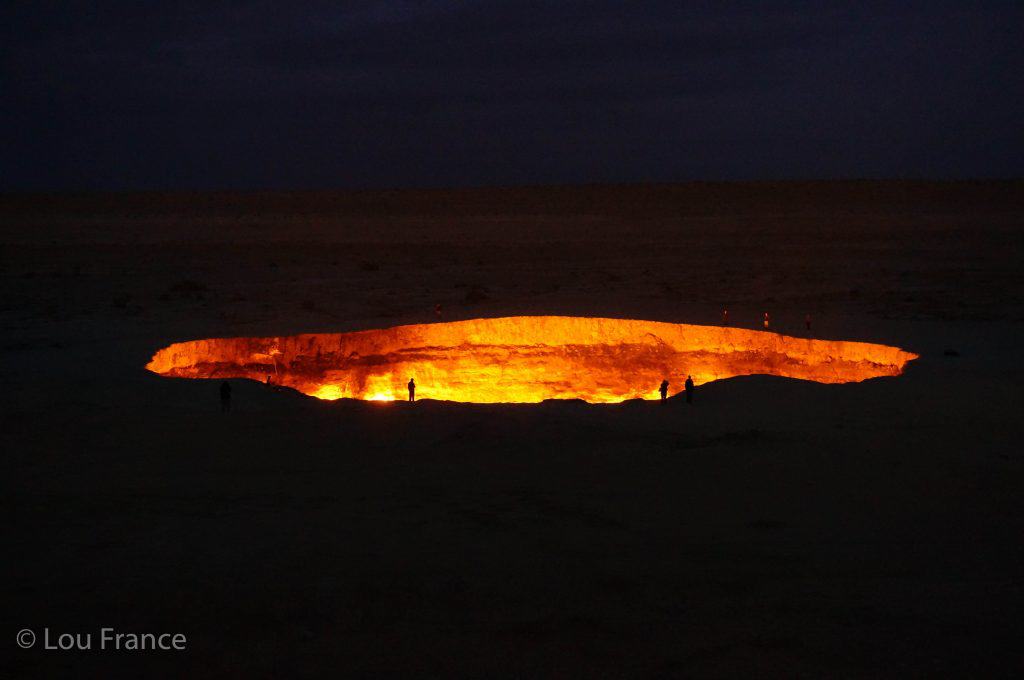
5. The Aral Sea, Uzbekistan/Kazakhstan
Another of the man made disaster sites and dark tourism places is located in neighbouring Uzbekistan. And once again it falls back to the period of the Soviet Era.
Located in two countries, Kazakhstan and Uzbekistan, the Aral Sea was once one of the largest lakes in the world. However, after extremely harsh irrigation practises used to produce cotton, the lake has shrunk to 10% of its’ original size.
Read more about visiting the Aral Sea in Uzbekistan, in this post .
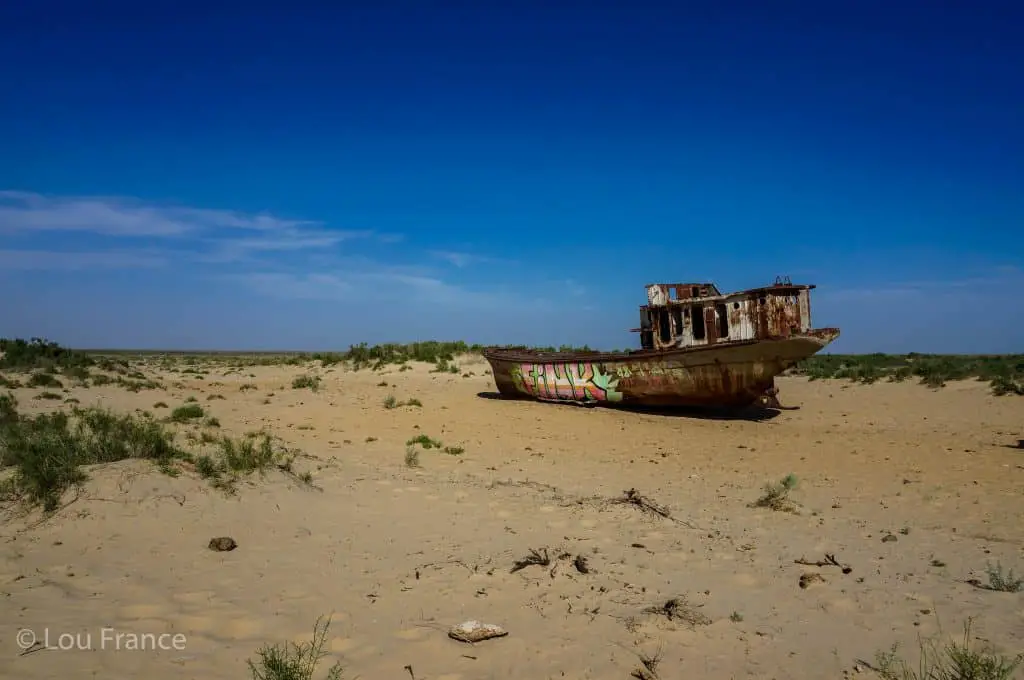
6. Zanzibar Slave Museum, Tanzania
Zanzibar is a beautiful tropical island found off the coast of Zanzibar. Tourists flock to the white sand beaches to enjoy a little slice of paradise. However, there is a dark history to this paradise island.
In the 1800s Stone Town was a prime location for the Arab Slave Trade. Slaves were shipped to Stone Town from the mainland and then held in tiny cellars for days without food or toilets, and with little air. It’s thought up to 50,000 slaves were sold from Zanzibar.
Built over the remains of this slave market now stands the Anglican Cathedral, an unapologetic memorial monument and an informative museum.
One of the 15 small cellars still remains and is accessible from the museum. A grim reminder of the inhumane conditions that occurred here.
7. Funeral Ghats in Varanasi, India
Situated in Northern India, Varanasi has long been on the tourist radar. Running through the heart of the city is the Ganges river, which is revered as holy by followers of the Hindu faith. Along the ghats that line the Ganges, Hindu pilgrims bathe in the river’s sacred waters in a ceremony known as puja .
Several of the ghats are also used as primary sites for Hindu cremations. Here death rituals are performed before the body is cremated.
A common tourist activity for visitors to Varanasi is to take a boat trip along the Ganges to observe, not only puja, but also to see the cremation ghats in operation. For this reason Varanasi is perhaps one of the most popular top dark tourism sites in India.
Before a trip to India, take a look at my top tips for travelling India !

8. Crumlin Road Gaol, Northern Ireland
There are many old jails and prisons around the world that have opened their doors to the dark tourism industry . The first, and arguably most famous being Alcatraz, however I never found my visits to Alcatraz particularly scary or alarming. Perhaps taking a boat trip in the Californian sun to reach the island downplayed the whole history somewhat?
There is a prison I visited that did have a distinctly oppressive feel to it though. On a recent road trip around Ireland I took a tour of Crumlin Road Gaol in Belfast. Perhaps because the history of this gaol is closer to home for me, it all feels a bit more real.
Or perhaps it’s because, as part of the compulsory guided tour, you are shown the execution room where the noose still hangs from the ceiling.
Other memorable visits to more ancient dungeons include the London Dungeons in the UK and the Bug Pit at Zindon Prison in Bukhara, Uzbekistan.
Famous players of The Great Game spent several years at Zindon prison, some of which was spent in a 4 metre deep pit. Guards of this pit would regularly pour scorpions, bugs and rodents onto prisoners heads.
To learn about the underhand dealings of the Great Game, I recommend this fabulous book by Peter Hopkirk

9. War Remnants Museum, Vietnam
For a long time Vietnam was known as a war rather than a country. A war that raged on for 20 years. And so as you might expect, there are several sites dedicated to the memory of this horrible period.
The Cu Chi Tunnels provide an unforgettable experience of war time conditions in Vietnam and the War Remnants Museum provides a detailed history of events.
The museum was originally called the Exhibition House for US and Puppet Crimes and whilst some displays are arguably a little one-sided, there’s no denying the horrific atrocities that went on during this war.
10. Stalin Museum, Georgia
In the small town of Gori, nestled in the beautiful Caucasus country of Georgia , you can find a museum dedicated to the memory of an unlikely hero.
Joseph Stalin was the leader of the Soviet Union for a quarter of a century. It’s thought that over 20 million Soviets died during Stalin’s regime, making him one of the most murderous dictators in history.
However, this museum somewhat brushes over this fact and focuses more on Stalin as a man.
In the gift shop you can even buy Stalin-themed souvenirs to purchase for friends and family back home!
After touring the museum visitors can take a look inside Stalin’s train carriage, which is now parked in the museum grounds.
Along the theme of murderous dictators, if you ever find yourself in Shanghai, China, be sure to visit the Propaganda Poster Art Museum. This tiny museum, tucked away under some high rise apartment buildings, has a great collection of propaganda art, from the Maoism period of Communist China.

More Dark Tourism Destinations
The following are more dark tourist places which I have not visited myself, but are very much on the dark tourism radar.
Aokigahara Forest aka Suicide forest, Japan
I actually only found out about this forest upon my return from Japan. I mentioned to my brother that I had visited Mt Fuji and his first question was if I’d visited the Suicide Forest. Obviously I hadn’t and even if I had known about it, I’m almost certain I wouldn’t have gone.
This enchanting forest has a historical reputation in Japanese mythology as being home to ghosts of the dead. But more recently it has become known as a place where people come to take their own lives.
Auschwitz, Poland
During World War II people from all over Europe were sent to labour camps constructed by Nazi Germany. Auschwitz concentration camp was the largest of these camps, where over 1.1 million men, women and children lost their lives.
Today the complex has been converted to a museum dedicated to remembrance and education. Auschwitz is perhaps the most well known dark tourism example on this list .
Chernobyl, Ukraine
In 1986 an explosion tore through through reactor number 4 of the Chernobyl Nuclear power plant, near the city of Pripyat. The result was the worst nuclear disaster in history.
Chernobyl is now a well known dark tourism destination , with numerous companies offering tours to Chernobyl and the abandoned town of Pripyat.
Have you seen the HBO series Chernobyl ? This series is extremely well made and although tough to watch, gives a good insight to the events that happened at Chernobyl.
Visiting places with a radioactive history has been growing in popularity in dark tourism. Other sites to visit include Hiroshima and Fukushima in Japan and Semipalatinsk Test Site in Kazakhstan.
Pompeii, Italy
In 79AD Mount Vesuvius erupted and destroyed the nearby Roman city of Pompeii. Pompeii was buried under meters of volcanic ash, preserving the city at the exact moment it was buried.
As a UNESCO World Heritage site, Pompeii is one of the most popular tourist attractions in Italy.
Final Thoughts on these Dark Tourist Sites?
Until I watched Dark Tourist I didn’t realise this branch of tourism even existed. For me, visits to war memorials and genocide museums are an uncomfortable but necessary part of learning about a country’s history.
Through this, we hopefully learn which mistakes to avoid in the future.
The purpose of visiting man made disasters such as Chernobyl and the former Aral Sea is perhaps a little more unclear. We obviously haven’t learnt any lessons from these, as we still continue to build Nuclear Power Plants and strip the earth of its’ natural resources.
Maybe one day we will learn?
How do you feel about visiting dark tourism sites? Have you visited any of these destinations or are there any others that you would add to this list? Let me know your thoughts below.
Like it? Pin it for later!

Join my newsletter today!
By checking this box I consent to the use of my information provided for email marketing purposes.
Louise is a Mountain Leader and Snowboard Instructor from South Wales. As a former Adventure Tour Leader she has spent the last 15 years travelling Asia, Africa and the Americas. Louise is a published photographer and is currently based in the UK.
Recent Posts
The Best eFoiling Destinations For Beginners
Imagine gliding effortlessly over the water, powered by the wind and waves, but with a futuristic twist. Welcome to the world of eFoiling - a dynamic blend of traditional water sports and...
A Guide To Visiting Rhossili Bay
Rhossili Bay and Worm's Head are two of the most popular and beautiful natural attractions in South Wales. These stunning destinations offer breathtaking views of the Welsh coastline and are a...
National Geographic content straight to your inbox—sign up for our popular newsletters here

Dark tourism: when tragedy meets tourism
The likes of Auschwitz, Ground Zero and Chernobyl are seeing increasing numbers of visitors, sparking the term 'dark tourism'. But is it voyeuristic or educational?
Days after 71 people died in a London tower block fire last June, something strange started to happen in the streets around it. Posters, hastily drawn by members of the grieving community of Grenfell Tower, appeared on fences and lamp posts in view of the building's blackened husk.
'Grenfell: A Tragedy Not A Tourist Attraction,' one read, adding — sarcastically — a hashtag and the word 'selfies'. As families still searched for missing inhabitants of the 24-storey block, and the political shock waves were being felt through the capital, people had started to arrive in North Kensington to take photos. Some were posing in selfie mode.
"It's not the Eiffel Tower," one resident told the BBC after the posters attracted the attention of the press. "You don't take a picture." Weeks later, local people were dismayed when a coachload of Chinese tourists pulled up nearby so that its occupants could get out and take photos.
Grenfell Tower, which still dominates the surrounding skyline (it's due to be demolished in late 2018), had become a site for 'dark tourism', a loose label for any sort of tourism that involves visiting places that owe their notoriety to death, disaster, an atrocity or what can also loosely be termed 'difficult heritage'.
It's a phenomenon that's on the rise as established sites such as Auschwitz and the September 11 museum in Manhattan enjoy record visitor numbers. Meanwhile, demand is rising among those more intrepid dark tourists who want to venture to the fallout zones of Chernobyl and Fukushima, as well as North Korea and Rwanda. In Sulawesi, Indonesia, Western tourists wielding GoPros pay to watch elaborate funeral ceremonies in the Toraja region, swapping notes afterwards on TripAdvisor.
Along the increasingly crowded dark-tourist trail, academics, tour operators and the residents of many destinations are asking searching questions about the ethics of modern tourism in an age of the selfie and the Instagram hashtag. When Pompeii, a dark tourist site long before the phrase existed, found itself on the Grand Tour of young European nobility in the 18th century, dozens of visitors scratched their names into its excavated walls. Now we leave our mark in different ways, but where should we draw the boundaries?
Questions like these have become the life's work of Dr Philip Stone , perhaps the world's leading academic expert on dark tourism. He has a background in business and marketing, and once managed a holiday camp in Scotland. But a fascination with societal attitudes to mortality led to a PhD in thanatology, the study of death, and a focus on tourism.
"I'm not even a person who enjoys going to these places," Stone says from the University of Central Lancashire, where he runs the Institute for Dark Tourism Research. "But what I am interested in is the way people face their own mortality by looking at other deaths of significance. Because we've become quite divorced from death yet we have this kind of packaging up of mortality in the visit economy which combines business, sociology, psychology under the banner of dark tourism. It's really fascinating to shine a light on that."
Historical roots
The term 'dark tourism' is far newer than the practice, which long predates Pompeii's emergence as a morbid attraction. Stone considers the Roman Colosseum to be one of the first dark tourist sites, where people travelled long distances to watch death as sport. Later, until the late 18th century, the appeal was starker still in central London, where people paid money to sit in grandstands to watch mass executions. Hawkers would sell pies at the site, which was roughly where Marble Arch stands today.
It was only in 1996 that 'dark tourism' entered the scholarly lexicon when two academics in Glasgow applied it while looking at sites associated with the assassination of JFK. Those who study dark tourism identify plenty of reasons for the growing phenomenon, including raised awareness of it as an identifiable thing. Access to sites has also improved with the advent of cheap air travel. It's hard to imagine that the Auschwitz-Birkenau memorial and museum would now welcome more than two million visitors a year (an average of almost 5,500 a day, more than two-thirds of whom travel to the Polish site from other countries in Europe) were it not for its proximity to Krakow's international airport.
Peter Hohenhaus, a widely travelled dark tourist based in Vienna, also points to the broader rise in off-the-beaten track tourism, beyond the territory of popular guidebooks and TripAdvisor rankings. "A lot of people don't want mainstream tourism and that often means engaging with places that have a more recent history than, say, a Roman ruin," he says. "You go to Sarajevo and most people remember the war being in the news so it feels closer to one's own biography."
Hohenhaus is also a fan of 'beauty in decay', the contemporary cultural movement in which urban ruins have become subject matter for expensive coffee-table books and a thousand Instagram accounts. The crossover with death is clear. "I've always been drawn to derelict things," the 54-year-old says. As a child in Hamburg, he would wonder at the destruction of war still visible around the city's harbour.
That childhood interest has developed into an obsession; Hohenhaus has visited 650 dark tourist sites in 90 countries, logging them all and more besides on his website . He has plans to put together the first dark tourism guidebook. His favourite holiday destination today is Chernobyl and its 'photogenic' ghost town. "You get to time travel back into the Soviet era but also into an apocalyptic future," he says. He also enjoys being emotionally challenged by these places. "I went to Treblinka in 2008 and heard the story of a teacher at an orphanage in Warsaw who was offered a chance to escape but refused and went with his children to the gas chambers. Stories like that are not everyday, you mull over them. Would you have done that?"
But while, like any tourism, dark tourism at its best is thought-provoking and educational, the example of Grenfell Tower hints at the unease felt at some sites about what can look like macabre voyeurism. "I remember the Lonely Planet Bluelist book had a chapter about dark tourism a while ago and one of the rules was 'don't go back too early'," Hohenhaus says. "But that's easier said than calculated. You have to be very aware of reactions and be discreet when you're not in a place with an entrance fee and a booklet." Hohenhaus said he had already thought about Grenfell Tower and admits he would be interested to see it up close. "It's big, it's dramatic, it's black and it's a story you've followed in the news," he says. "I can see the attraction. But I would not stand in the street taking a selfie."
A mirror to mortality
An urge to see and feel a place that has been reduced to disaster shorthand by months of media coverage is perhaps understandable, but Stone is most interested in the draw — conscious or otherwise — of destinations that hold up a mirror to our own mortality. "When we touch the memory of people who've gone what we're looking at is ourselves," he says. "That could have been us in that bombing or atrocity. We make relevant our own mortality." That process looks different across cultures — and generations — and Stone says we should take this into account before despairing of selfie takers at Grenfell Tower or Auschwitz.
"I've heard residents at Grenfell welcoming visitors because it keeps the disaster in the public realm, but they didn't like people taking photos because it's a visual reminder that you're a tourist and therefore somehow defunct of morality," he explains. "We're starting to look at selfies now. Are they selfish?" Stone argues that the language of social media means we no longer say "I was here", but "I am here — see me". He adds: "We live in a secular society where morality guidelines are increasingly blurred. It's easy for us to say that's right or wrong, but for many people it's not as simple as that."
"Travel itself is innately voyeuristic," argues Simon Cockerel, the general manager of Koryo Tours , a North Korea specialist based in Beijing. Cockerel, who has lived in China for 17 years and joined Koryo in 2002, says demand has grown dramatically for trips to Pyongyang and beyond, from 200 people a year in the mid 1990s, when the company started, to more than 5,000 more recently. He has visited the country more than 165 times and says some clients join his tours simply to bag another country, and some for bragging rights. But the majority have a genuine interest in discovering a country — and a people — beyond the headlines.
"I've found everyone who goes there to be sensitive and aware of the issues," he says. "The restrictions do create a framework for it to be a bit like a theme park visit but we work hard to blur those boundaries. More than 25 million people live in North Korea, and 24.99 million of them have nothing to do with what we read in the news and deserve to be seen as people not as zoo animals or lazy caricatures."
More challenging recently has been the US ban on its citizens going to North Korea, imposed last summer after the mysterious death of Otto Warmbier. The American student had been arrested in Pyongyang after being accused of trying to steal a propaganda poster. Americans made up about 20% of Koryo's business, but Cockerel argues the greater loss is to mutual perception in the countries. "The North Korean government represent Americans as literal wolves with sharpened nails," he says. "At least a few hundred Americans going there was a kind of bridgehead against that. Now that's gone."
At Grenfell Tower, responsible tourism may yet serve to keep alive the memory of the disaster, just as it does, after a dignified moratorium, at Auschwitz and the former Ground Zero. Hohenhaus says he will resist the urge to go until some sort of memorial is placed at the site of the tower. At around the time of a commemorative service at St Paul's Cathedral six months after the fire, there were calls for the site eventually to be turned into a memorial garden. The extent to which Hohenhaus and other dark tourists are welcomed will be decided by the people still living there.
Five of the world's dark tourism sites
1. North Korea Opened to visitors in the late 1980s, North Korea now attracts thousands of tourists each year for a peek behind the headlines.
2. Auschwitz-Birkenau The former Nazi death camp became a memorial in 1947 and a museum in 1955. It's grown since and in 2016 attracted a record two million visitors.
3. 9/11 Memorial and Museum Built in the crater left by the twin towers of the World Trade Center, the museum, opened in 2014, has won plaudits for its portrayal of a disaster and its impact.
4. Rwanda Visitor numbers to genocide memorials have grown in Cambodia and Bosnia as well as in Rwanda, where there are several sites dedicated to the 1994 massacre of up to a million people. The skulls of victims are displayed.
5. Chernobyl & Pripyat, Ukraine Several tour companies exist to send visitors to the exclusion zone and ghost town left otherwise empty after the nuclear accident in 1986. All are scanned for radiation as they leave.
Published in the March 2018 issue of National Geographic Traveller (UK)
Find us on social media
Facebook | Instagram | Twitter
Related Topics
- EDUCATIONAL TRAVEL
- CULTURAL TOURISM
- HISTORY AND CIVILIZATION
You May Also Like

They inspire us and teach us about the world: Meet our 2024 Travelers of the Year

An insider's guide to Denver, Colorado's wildly creative capital
Limited time offer.
Receive up to 2 bonus issues, with any paid gift subscription!

10 reasons to visit the East Coast in 2024

An architectural tour of the Georgian capital, Tbilisi

7 of the UK's best gallery cafes

A long weekend in Orkney

How to plan a walking tour of Glasgow in the footsteps of Charles Rennie Mackintosh
- History & Culture
- Photography
- Environment
- Paid Content
History & Culture
- Mind, Body, Wonder
- Terms of Use
- Privacy Policy
- Your US State Privacy Rights
- Children's Online Privacy Policy
- Interest-Based Ads
- About Nielsen Measurement
- Do Not Sell or Share My Personal Information
- Nat Geo Home
- Attend a Live Event
- Book a Trip
- Inspire Your Kids
- Shop Nat Geo
- Visit the D.C. Museum
- Learn About Our Impact
- Support Our Mission
- Advertise With Us
- Customer Service
- Renew Subscription
- Manage Your Subscription
- Work at Nat Geo
- Sign Up for Our Newsletters
- Contribute to Protect the Planet
Copyright © 1996-2015 National Geographic Society Copyright © 2015-2024 National Geographic Partners, LLC. All rights reserved

- Destinations
- Travel Checklist
- Travel By Sea (Ferries)
15 Gut-Wrenching Dark Tourism Destinations for 2024
Having just finished the new Netflix series ‘ Dark Tourist ’ it compelled me to write an article on the subject of dark tourism and list some of my favourite dark tourism destinations around the world. So, let’s find out, what is dark tourism.
Examples of dark tourist destinations include sites of natural and man-made disasters from Pompei to Chernobyl. Places like Auschwitz and the killing fields in Cambodia, the Unit 731 Museum in China and the Karagana gulag in Kazakhstan.
As someone with a curious interest in all things dark and spooky, I’ve been visiting dark tourism sites ever since I first start travelling. I’ve visited Iraq, North Korea twice and spent the night at Chernobyl. I’ve explored museums around the world and even use to volunteer at Highgate Cemetery in London.
*Disclaimer: This article contains affiliate links, which means should you click and purchase, I will receive a small commission at no extra cost to you.
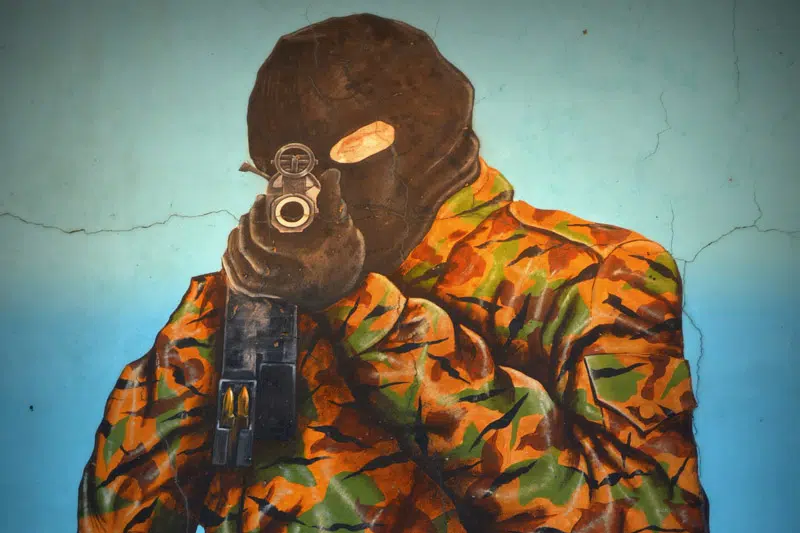
Table of Contents

Quick Summary of Dark Tourism Sites Covered
- Albania – BunkArt Museum
- Armenia – Memorial of the Armenian genocide
- Bosnia and Herzegovina – Old front line, Mostar
- China – Unit 731 Museum
- England – Cold war nuclear bunker
- Hungary – House of Terror
- Iraq – Erbil
- Kazakhstan – Karaganda gulag
- North Korea – DMZ
- Northern Ireland – Belfast murals
- Romania – Bran “Dracula” Castle
- Transnistria – Europe’s last communist regime
- Turkey – City of Diyarbakir
- Turkmenistan – the “Door to Hell” at Darvaza
- Ukraine – Chernobyl
My Top List of Dark Tourism Destinations
Wherever I travel I am always looking out for dark tourism destinations, and below are some of my top picks from all around the world.
1. BunkArt, Albania

If there is one thing that former Albanian dictator Enver Hoxha loved, it was concrete bunkers. One of the most interesting of these is now a museum under the streets of the capital, Tirana. Th BunkArt Museum is a must-visit ark tourism destination for visitors to Albania.
Situated next to the parliament buildings in the centre of the city is a small grey bunker that descends into a dark underground tunnel. Inside is a museum detailing the country’s recent history as one of the harshest and most reclusive regimes in the world.
As well as the interesting history and cold war stories contained below, the bunker is home to conceptual sculptures created by local artists. Located on Fadil Deliu Street near the main square. View my BunkArt guide or visit the official website for more information.
Address: Street Abdi Toptani, Tiranë, Albania. See location on Google maps . Entrance: Free Time Needed to Visit: One to two hours Website : bunkart.al
2. Genocide Memorial Complex, Armenia

The Genocide Museum Institute in Yerevan , also known as the Armenian Genocide Museum, is a museum dedicated to educating visitors about the Armenian Genocide that took place in Western Armenia (modern-day Turkey) at the beginning of the 20th Century.
The museum is located on a hill overlooking the city and houses a collection of artefacts, photographs, and personal accounts from survivors of the genocide. The exhibits guide visitors through the history of the genocide, including the events that led up to it and the aftermath.
The museum also features a memorial garden and a monument dedicated to the victims of the genocide. The Genocide Museum Institute serves as an important reminder of the atrocities committed against the Armenian people and a tribute to those who lost their lives.
Address: 8 Tsitsernakaberd Highway, Yerevan 0028, Armenia. See location on Google maps . Entrance: Free Time Needed to Visit: One to two hours Website: www.genocide-museum.am
3. Mostar, Bosnia and Herzegovina

Mostar in itself is a beautiful town and deserves to be appreciated on its own merits as a tourist destination. However, given tragic events in its recent history it seems appropriate to include in this list. One of the defining features of old Mostar is the famous Stari Most bridge.
The bridge was shelled in 1993 during the Bosnian War but has thankfully been painstakingly rebuilt using the same stone quarried nearby. Evidence of the war is not hard to miss and the old front line has been preserved as a terrible reminder of what happened here during the early nineties.
You can reach Mostar by train or bus from Sarajevo in Bosnia or by bus from Split an Dubrovnik in Croatia. I’ve been to Mostar twice now; in 2010 and 2022, and it’s still one of my favourite places to visit.
Address: Dr Andre Starcevica, Mostar, BiH. See location on Google maps . Entrance: Free Time Needed to Visit: One to two hours
4. Unit 731 Museum, China

One of the darkest chapters of recent human history is Shiro Ishii’s Unit 731. The unit was set up to research chemical and biological weapons and the Japanese Imperial Army tested these on unwitting and unwilling subjects in far northeast China.
The museum, located in China’s coldest city of Harbin , houses a grim collection of artefacts, confessions, experiment reports and photographs (the most extreme of which are not on display). There are also disturbing dioramas detailing some of the sick experiments.
This is truly one of the darkest of dark tourism destinations and it’s surprising that the horrors that went on here are not more widely known. The museum was closed for renovation when I lived i Harbin in 2016, but I went bak to visit in 2021 and I’m glad I did.
You can read more or see my short film taken at the museum.
Address: Xinjiang Street, Pingfang District, Harbin, China. See location on Google maps . Entrance: Free Time Needed to Visit: Two to three hours Website: unit731.org
5. Kelvedon Hatch Nuclear Bunker, England

Ever wondered where the UK government would go in the event of an all-out nuclear war? Wonder no more as this “secret” nuclear bunker is now open to the public. I visited on a trip back from China and loved the experience.
Tucked away beneath the Essex countryside, Kelvedon Hatch would have housed up to 10,000 people, including the Prime Minister, who would have managed the response to a nuclear attack and run the country from the confines of the bunker.
The nearest rail station is Brentwood. You can take a tube from London to Epping, Debden or Theydon Boice and then a taxi (approx 7 miles).
Check out my list of 10 dark tourism destinations in London .
Address: Kelvedon Hatch, Brentwood, Essex, CM15 0LA. See location on Google maps . Entrance: £7.50 ($9.20) Time Needed to Visit: Two to three hours Website: secretnuclearbunker.com
6. House of Terror, Hungary

One of my favourite museums is the House of Terror in Budapest. This is one of the top dark tourist sites thanks to the building’s dark history as a prison and interrogation centre for both the nazis and communists.
Address: Budapest, Andrássy út 60, 1062 Hungary. See location on Google maps . Entrance: 400 HUF ($1.10) Time Needed to Visit: Two to three hours Website: www.terrorhaza.hu

I had always been intrigued to visit Iraq as my grandfather used to work at Baghdad University in the 1950s. He inspired my own travels by driving all the way from England , and in late 2022 I arrived in Iraq after travelling overland myself.
Lik Mostar, Iraq is a beautiful place with friendly locals and a history dating back millennia. I visited the city of Erbil in the Kurdistan region of northern Iraq and was blown away by the place. Cities like Baghdad, and especially Mosul still show the scars of conflict and safety remains a concern in the region.
8. Karaganda Gulag, Kazakhstan

I visited the Karaganda Gulag (Karlag) whilst travelling from Kazakhstan’s capital Astana to Almaty. This fascinating complex includes a museum with photographs, exhibits and dioramas reflecting the history of the place under Stalin and during the time of the USSR.
Explore recreations of the officer’s quarters, dungeons and transport vehicles used to move prisoners. The camp is located in the heart of the vast Kazakh steppe, once part of the Soviet Union.
Address: 39, Dolinka 101604, Kazakhstan. See location on Google maps . Entrance: 1,000 Tenge ($2) Time Needed to Visit: Two to three hours
9. The DMZ, North Korea

Like Turkmenistan, North Korea is an equally reclusive and paranoid country, but one we hear a lot more about in the media. For the curious, it can make a fascinating holiday destination.
I’ve been to North Korea twice and visited different cities across the country from Sinuiju in the north to the capital Pyongyang and Kaesog in the south. Not far from Kaesong is the Demilitarized Zone (DMZ) which separates North Korea from South Korea.
10. Belfast Murals, Northern Ireland

Northern Ireland has a long and tragic history culminating in 30 years of violence from the 1970s up to 1998 when the Good Friday Agreement put an end to the “Troubles”. The north of Ireland has a population made up of two distinct groups; Irish republican/catholic and British loyalist/Protestant.
The Catholic/republican side want to be reunited with the rest of Ireland and this led to the formation of the IRA (Irish Republican Army). The loyalist/protestant side want to remain a part of the UK and set up different paramilitary groups like the UDA (Ulster Defence Association) and UVF (Ulster Volunteer Force) to take on the IRA.
The cities of Belfast and Derry are home to many brightly coloured murals depicting the years of struggle on either side of the divide. I took a three-hour political walking tour which included many of the murals and a history of the troubles from ex-prisoners. Book the tour with Get Your Guide .
11. Bran Castle, Romania

Vlad Tepes, also known as Vlad Dracul or Vlad the Impaler was born in 1428 in a charming old house in Sighisoara that now serves as a restaurant. Tepes was the inspiration behind Bram Stoker’s Dracula and it’s possible to visit Bran Castle in Transylvania which has long been associated with the Dracula story.
Bran Castle is worth a visit for its beautiful gothic architecture, but there is’t a great deal to do i the village aside for that. I spent two days there, but it’s better to take a day trip from nearby Brasov .
Book a tour of Bran Castle with Get Your Guide
Address: Strada General Traian Moșoiu 24, Bran 507025, Romania. See location on Google maps . Entrance: 40 Lei ($8.70) Time Needed to Visit: One to two hours
12. Transnistria

Like Mostar above, it seems a little unfair to include Tiraspol on a list of dark tourism sites, but as charming as this small city is, it gets a place due to Transnistria being a country that doesn’t exist according to the rest of the world (it is recognized only by Abkhazia, Artsakh and South Ossetia; themselves also unrecognized breakaway republics).
Stuck in a soviet time-warp, the KGB is still active here, posters of Lenin adorn the streets and tanks and troops guard the demilitarized zone separating it from Moldova.
You can take a bus to Tiraspol from Chisinau in Moldova and get a VISA/permit at the border. Journey time is approx 2 hours including border crossing and costs under 5 Euros.
Need somewhere to stay in Transnistria or looking for a tour guide? Check out Mars Hostel !
13. Diyarbakir, Turkey

Diyarbakir is a city in southeastern Turkey close to the border of Syria and Iraq. The city is home to Turkey’s largest Kurdish population ad has something of a troubled history. During the 2016 Seige of Sur, many houses were destroyed by Turkish forces.
I spent six weeks living in Diyarbakir in 2022 and although the city has suffered (most recently in the 2023 earthquake), it is also a fantastic destiation with lots of history dating back to Roman times.
14. The Darvaza Gas Crater, Turkmenistan

Turkmenistan deserves a place all of its own on any dark tourist’s list thanks to the strange city of Ashgabat and the bizarre laws still in place in this reclusive former soviet republic. The country is made up of 90% desert, and hidden deep within is a huge flaming sinkhole that has been burning for over 40 years.
I visited the Darvaza Gas Crater (also known as the Door to Hell) in 2017 on my way overland from England to China and spent the night camping next to the crater.
Arrive as the sun is setting and camp next to the roaring crater, but don’t get too close as there are no safety barriers and the fumes can be quite toxic! Definitely one of the top dark tourism destinations in the world!
15. Chernobyl, Ukraine
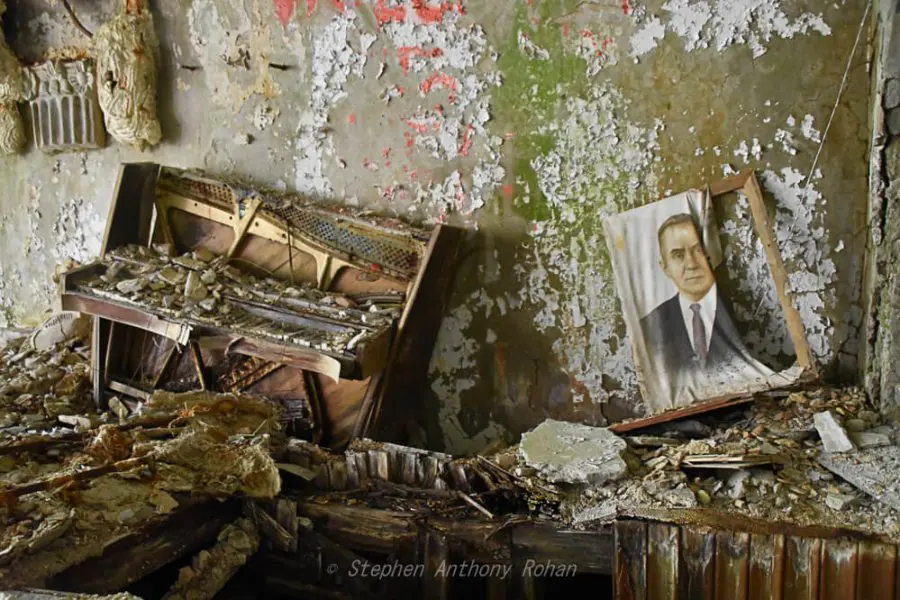
Chernobyl is one of the top dark tourism destinations in the world and is well worth a visit for anyone interested in not only dark tourism, but also the cold war and the former Soviet Union.
Wander around the deserted city of Pripyat where nature has well and truly reclaimed the town. Pripyat was once a bustling metropolis of 50,000 nuclear power plant workers and their families.
Travel through the exclusion zone with a Geiger counter to see how dangerous the radiation can be. Marvel at the massive Duga Radar Station hidden deep in the radioactive forest. Ironically, it was used by the soviets to detect incoming nuclear missiles from the West.
What Exactly is Dark Tourism?
According to the Wikipedia page, Dark Tourism “has been defined as tourism involving travel to places historically associated with death and tragedy.” But goes on to state that “The main attraction to dark locations is their historical value rather than their associations with death and suffering.”
Dark tourism can mean different things to different people. For me it is the exploration of places with a dark or similarly interesting aspect. From Dracula’s castle in Transylvania or Salem in the USA to the Darvaza ‘Door to Hell’ gas crater in Turkmenistan or North Korea and Chernobyl, these are all places I have recently visited that could be considered dark tourism spots.
The University of Central Lancashire is conducting studies into the rise of dark tourism which makes for some interesting reading.
Most people equate Dark Tourism with human suffering. But although many such places on the dark tourist’s map will have been witness to such horrors, it can equally include creepy abandoned places (Chinese abandoned cities), cold war bunkers or just the outright weird (Ashgabat in Turkmenistan).
Dark Tourism can include sites linked to genocide (Auschwitz, the Killing Fields etc), nuclear catastrophe (Chernobyl, Fukashima etc), war or disaster tourism (Iraq, Afghanistan etc) and much more.
It is up to the individual to visit what they feel comfortable with. If you go with the aim of increasing knowledge and a better understanding, then that can’t be a bad thing. If you are going to simply gawp at misfortune or tragedy, then better stay at home and turn on the TV!
Is Dark Tourism ok or Ethical?
It’s important to remember that many dark tourist sites have seen tragic events and as with travelling anywhere, respect is key to coming away from the experience a better person.
Dark tourism should not be about voyeurism, but for those with a morbid fascination, or even a healthy curiosity, seeking out such places can be extremely educational as well as humbling.
Check out this great list of 50 crazy destinations for lovers of the weird and macabre.
Below I list 10 of my favourite dark tourism destinations. You can find details of how you can visit them too if you dare!
The best resource for travellers interested in dark tourism is the site dark-tourism.com. The site is home to hundreds of articles on dark tourist locations across the globe.
Now you know the answer to the question: what is dark tourism, which sites would you like to see?! Comment below with your favourite dark tourism destination!
Dark tourism is popular around the world and most countries have dark tourist sites. From Pompei in Italy to Auschwitz in Poland and Chernobyl in Ukraine, these places see many visitors every year.
Dark tourism places include Bran Castle in Romania, the House of Terror in Hungary, Chernobyl, Fukushima, the Uit 731 Museum in China and many more. Countries on the dark tourist map include Syria, North Korea ad Iraq.
Dark tourists are people that search out the macabre, spooky or places with a dark history.
Final Thoughts
With so many interesting dark tourism destinations from Albania to Armenia and North Korea to Northern Ireland, which of these sites are you interested in seeing? I will continue to search out ore fascinating dark tourist sites on my travels.
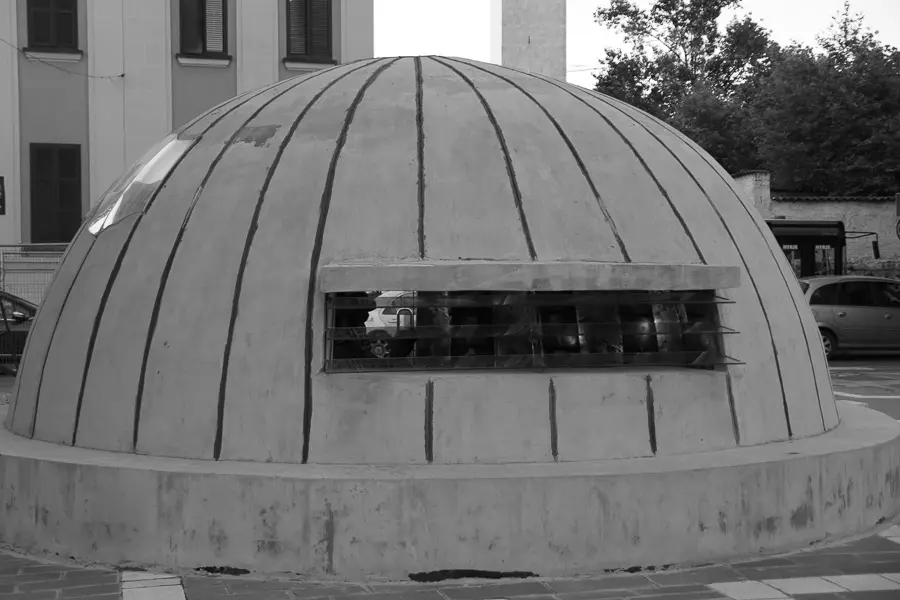
About the author: Steve Rohan is a writer from Essex, England. He has traveled to over 60 countries, lived in Armenia, China and Hong Kong, and is now living the digital nomad life on the road.
Steve prefers “slow travel” and has covered much of the world by train, bus and boat. He has been interviewed multiple times by the BBC and recently featured in the documentary Scariest Places in the World . See the About page for more info.
Where I am now: Yerevan, Armenia 🇦🇲
5 thoughts on “ 15 Gut-Wrenching Dark Tourism Destinations for 2024 ”
These are some very interesting places and a few I didn’t even know tourists could go visit (NK) but it’s awesome that you shed a bit of bright light on places that are known as quite “dark” to the average person.
Thanks Dom, yes North Korea is open to tourists and makes a fascinating destination!
I love Dark Tourism and find most of the sites fascinating. This is a great list and I want to travel to so many of these places!
I would also suggest the Killing Fields and the Tuol Sleng Genocide museum in Cambodia
Hi KS, thanks for the heads-up. I will be visiting Cambodia later this year and will definitely be visiting the Killing Fields and adding it to this post. Best, Steve
Leave a Reply Cancel reply
Your email address will not be published. Required fields are marked *

Everything You Need To Know Before Visiting Turkmenistan | A Complete Travel Guide
By Author Christian L.
Posted on Published: December 22, 2021 - Last updated: April 2, 2022
Categories Central Asia , Destinations , Turkmenistan
Turkmenistan is the strangest and the least explored of all the six countries in Central Asia. It’s also one of the least visited countries in the world, with less than 10 000 foreign tourists a year. This unique country is hard to get entry to but what awaits is a world of intrigue and an experience that will leave you with memories for a lifetime.
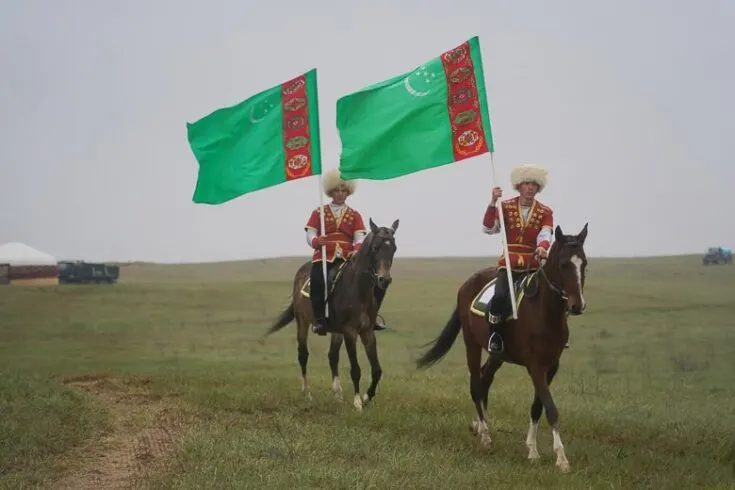
With that in mind, here is a complete travel guide to Turkmenistan to get you prepared and ready, with a few Turkmenistan facts and strange laws to go along with it.
During my visit to Turkmenistan so did I travel around a significant part of the country for eight days, visiting big parts of the country doing this itinerary: Ashgabat – Nisa – Geok Tepe – Kov Ata cave – Nokhur – Parau Bibi – Balkanabat – Yangy Kala Canyon – Turkmenbashy – Ashgabat – Darvaza Gas (The Gates To hell) – Ashgabat.
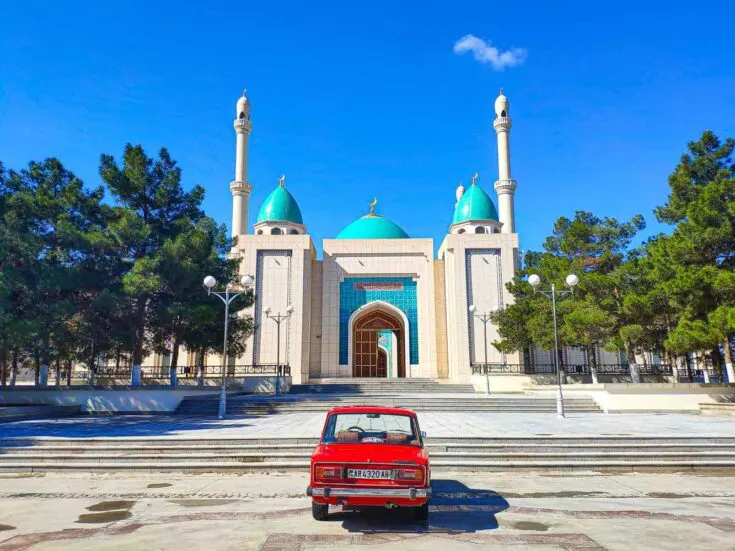
Getting to Turkmenistan
Officially, foreign tourists are welcomed, but the requirement for expensive guided tours and a lengthy and difficult visa process discourage many foreign visitors from visiting Turkmenistan.
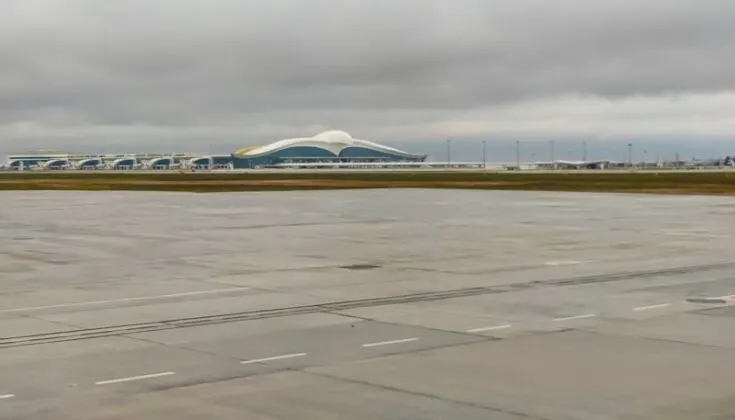
Getting to Turkmenistan is the hardest part of the trip. There are no online bookings for flights with the national airline yet, so tickets can only be purchased through an agent. You can also only fly into Ashgabat city as this is the only port of entry for international arrivals and departures.
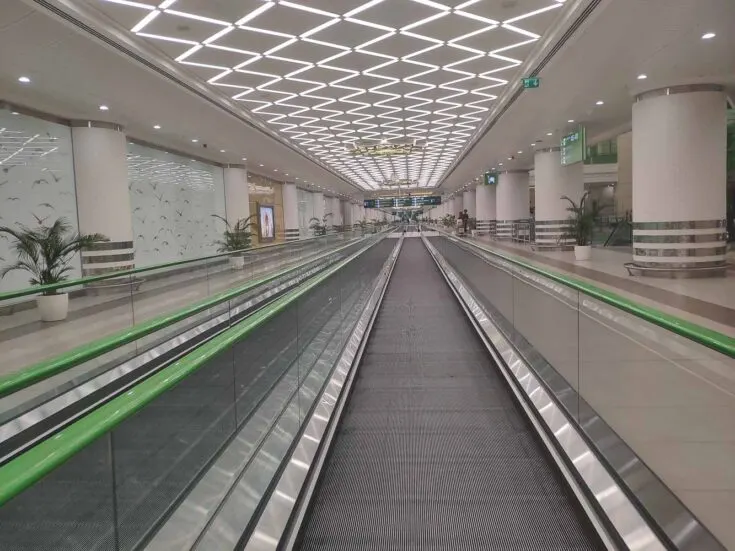
To Turkmenistan with flights
There are only a few international flights to Turkmenistan, with only Turkish Airlines and Lufthansa being the international airlines flying into Turkmenistan. However, the local Turkmenistan Airlines offers international flights to London, Birmingham, Dubai , Bangkok , Beijing, Paris, New Delhi , Amritsar , Moscow, Saint Petersburg , Jeddah , and Minsk. NB. Since the outbreak of Covid, all international flights to Turkmenistan have been canceled.
Visa for Turkmenistan Travel
The visa process to gain entry to Turkmenistan is strict, to say the least. Probably the most difficult visa in the world. A tourist visa for Turkmenistan is only possible to obtain with help from a local Travel Agency, meaning you will have to book a guide and a tour, but the good news is with a pre-booked trip, are you able to get the visa on arrival at the international airport in Ashgabat. Once you get the invitation letter, so will it only take about 2 min to get your visa at the airport. If you are traveling overland, so it is possible to get a 3 or 5-day transit visa for Turkmenistan on your own without too much difficulty. But over the recent years, rejections have become an estimated 50% rejection rate.
The most up-to-date information about Turkmenistan visas can be found here .
Registration in Turkmenistan
After all the red tape that you have to jump through to get into Turkmenistan, you will have to register your stay with the local Migration officials upon arrival, and every city you stay in during your visit. This is only for those who manage to obtain a visa on their own, though. If you go with a tour agency, then they should take care of this for you.
Best Places to Visit in Turkmenistan
During a visit to Turkmenistan, you can travel around a significant part of the country for eight days, and this is the best itinerary for it.
Ashgabat
The capital city of Ashgabat is an odd place that once had elements and influences of Soviet Russia. This all changed when the new President took over. He demolished the older Russian structures and created all-new buildings made of white marble.
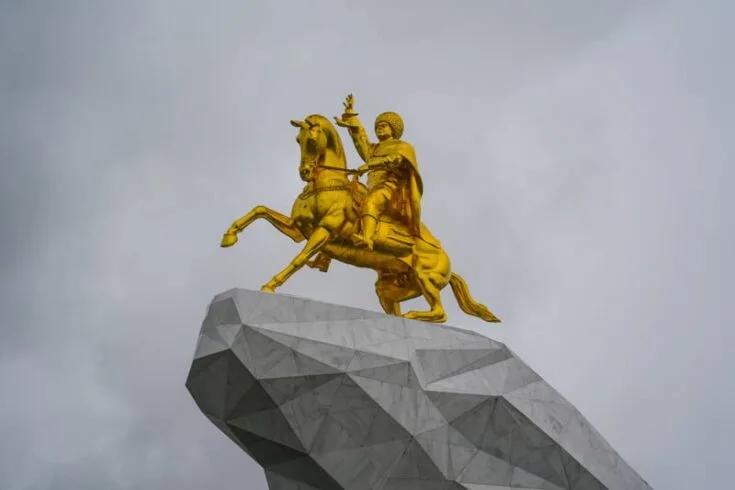
One thing that’s a little creepy is that the city is very quiet, to the point where it almost feels like it’s abandoned. It is because of this that the city has the nickname ‘the city of the dead by many foreign tourists, however, I did really like Ashgabat.
Take a while to explore all the marble and gold buildings and take a trip to the Gates to Hell outside of the city.
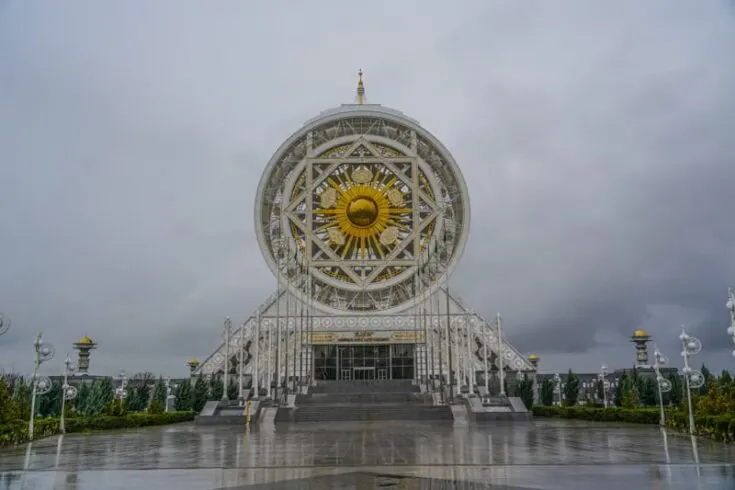
Just outside of Ashgabat is the ancient city of Nisa, also known as Parthaunia. This massive city was the first capital of the area and dates back to 250 BC. The fortress within the city was made a UNESCO Heritage site with Parthian remains discovered inside of it.
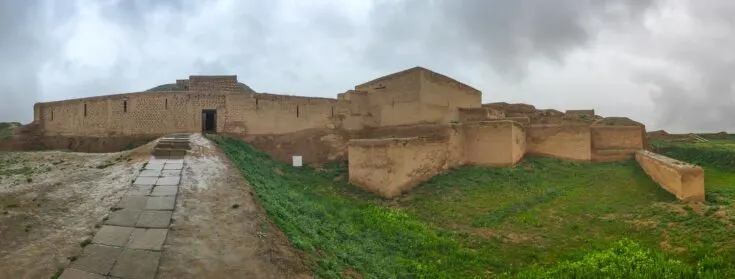
It is believed that this was the Arsacid Empire’s first seat. It was an immensely important trading center for the Parthian Empire and was also famous for its incredible horses that were both beautiful and fast.
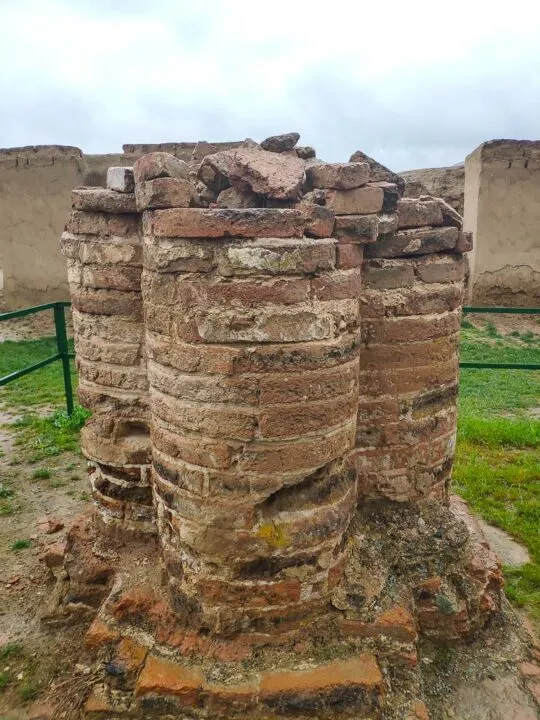
Kov Ata Cave
One of Turkmenistan’s natural wonders, this cave dives down to around 59m/195 feet underground and has a naturally heated lake at the bottom of it. You can actually swim in this lake with the waters believed to have medicinal powers; thanks to the thermal heat of the lake, the lake is 35+ warm.
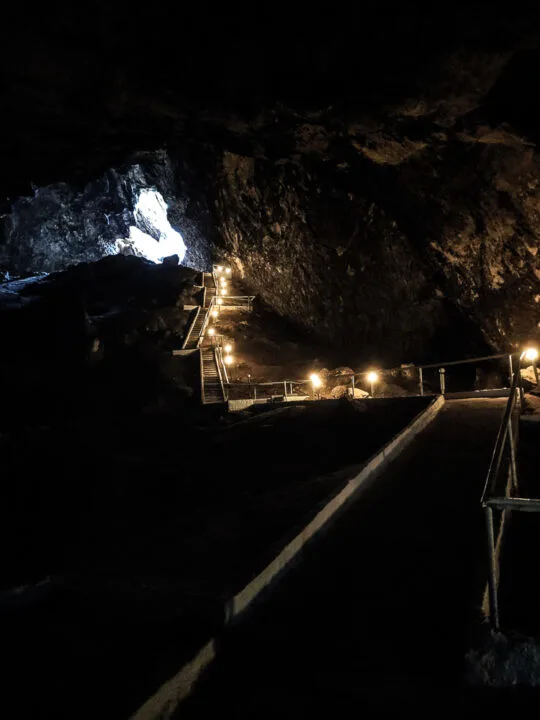
Oh, the cave is also home to an immense number of bats that will circle overhead while you are in the lake. Be aware that the lake is really deep, while there´s a small platform to stand on, so is it often crowded with locals, so you should be able to swim to enjoy the lake. You should only spend a maximum of 20 minutes in the lake and 45 minutes in the cave in total because of the sulfur fumes. But nobody checks.
There´s a small changing area at the lake, but the whole area is really dark without any safety guards or life jackets if someone gets into problems in the water.
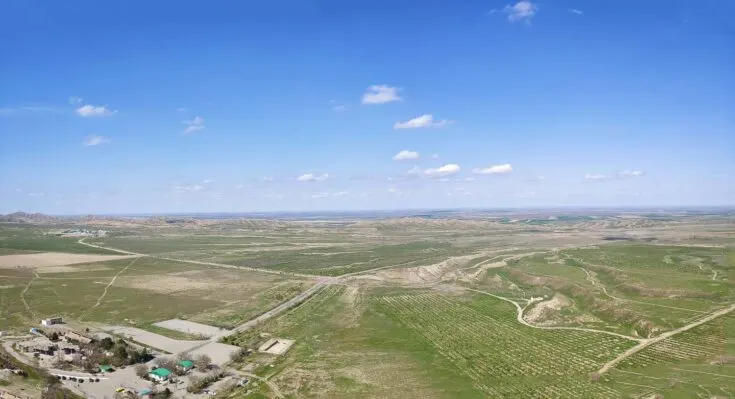
NB. The place is absolutely not wheelchair available or for people with a bad knee.
This little area is very remote and has an interesting set of beliefs as they credit that they are descendants of Alexander the Great. The inhabitants speak a different dialect which other Turkmen struggle to understand.
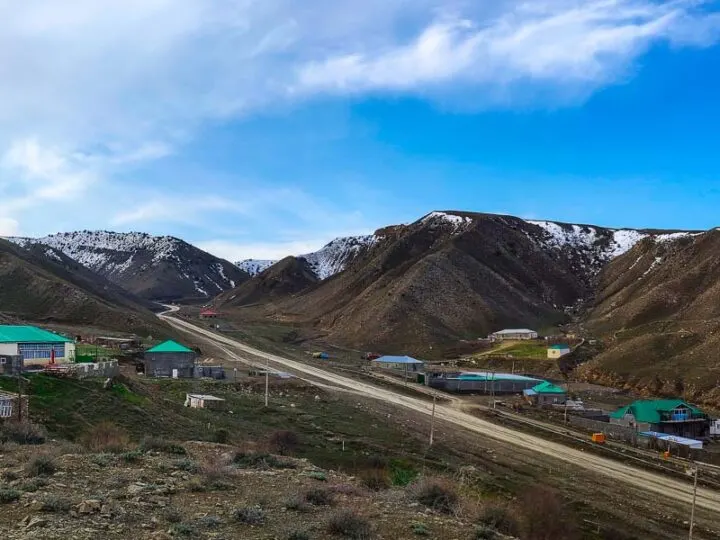
They are known for their odd customs and their work ethic. They are a rich little village with new cars being a pretty common sight.
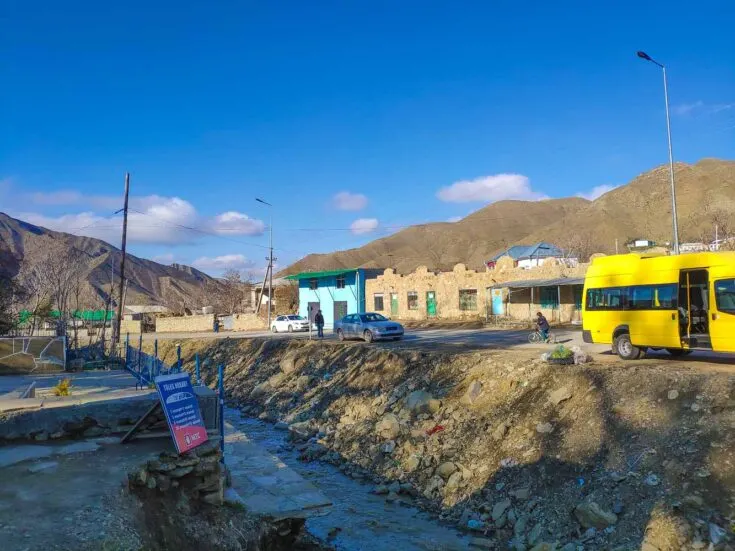
This is a beautiful area to hike with the several different villages that make up the area being within walking distance. Take to the trails past the swimming areas and waterfalls and bask in the nature around you.
But most people that visit Nokhur, come here for the Nokhur cemetery. A pretty strange site. The graves at Nokhur cemetery are marked by the horns of mountain goats, point to burial rites steeped in animism, sprinkled with Zoroastrianism. The goat horns are believed to fight off evil spirits, while the stones are marked with steps, to help the deceased ascend to heaven.
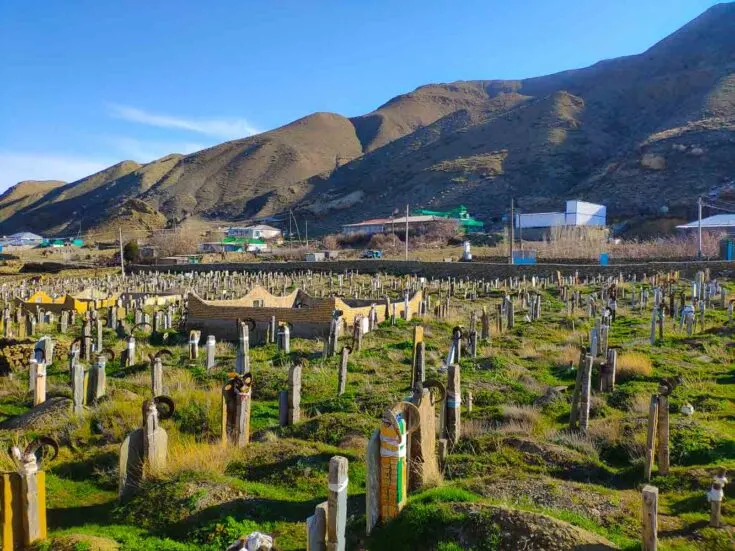
The white Parau Bibi mausoleum is a pilgrim site and shrine to the patron of all pregnant women and infants. Women from across Turkmenistan will gather here and ask for help when needed. This is an amazing area to visit and one that will leave a lasting impression.
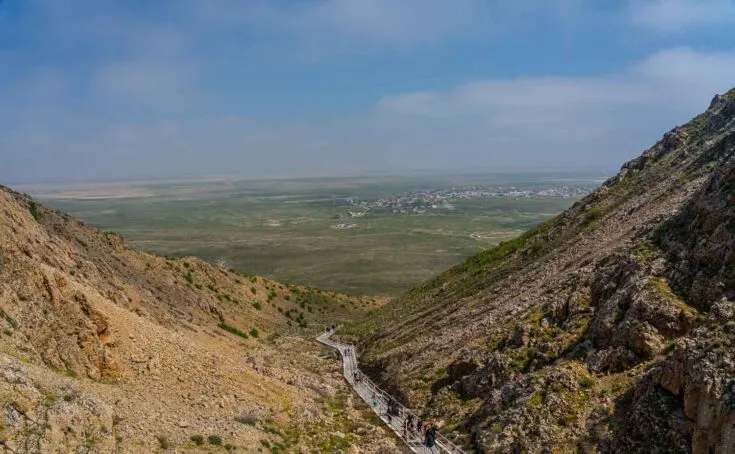
This city is the capital of the largest region in Turkmenistan but also one of the youngest. It’s famous for being where the oil and gas for the country were found. Here, you’ll take a step inside modern Turkmenistan, with all the interesting structures and also having a very small amounts of people.
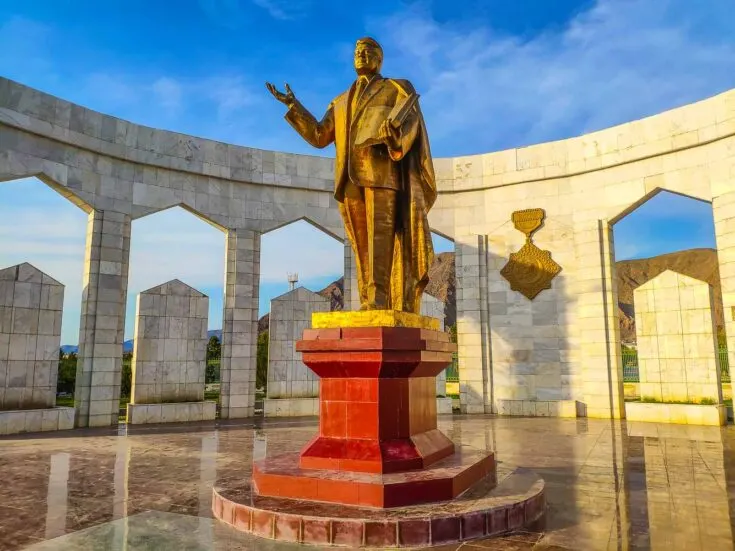
Yangykala Canyon
The Yangykala Canyon is an often overlooked or forgotten place that most Turkmenistan people haven’t even seen themselves. It´s a real off-the-beaten-path destination in Central Asia. This natural attraction is something to behold, with sights of yellow, red, and pink rock contrasting the sharp canyon walls.
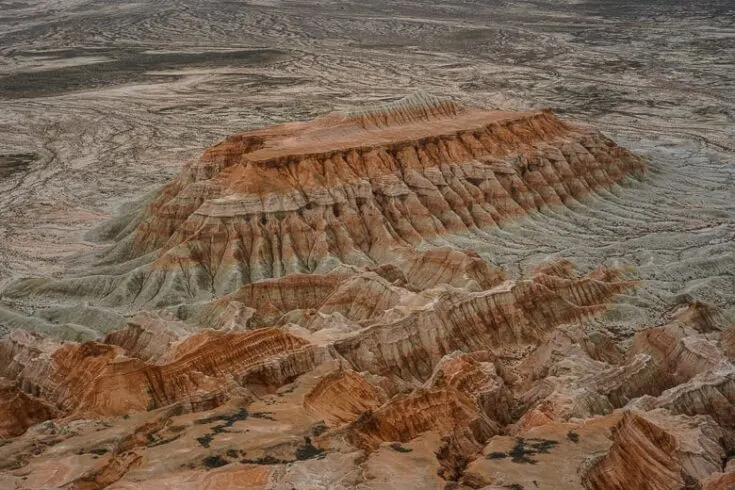
It is even possible to camp on a plateau there overnight so you can wake up to the solitude in the desert.
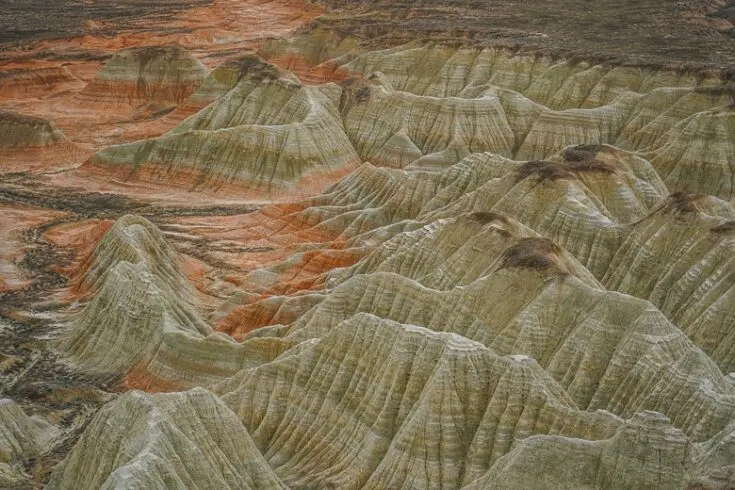
Turkmenbashy
Sitting on the edges of the Caspian sea , Turkmenbashy is a port city that offers a link to Baku from either railway or by taking a ferry. Just outside of the city is a smaller area of Awaza, which happens to be an insanely popular holiday destination of the country.
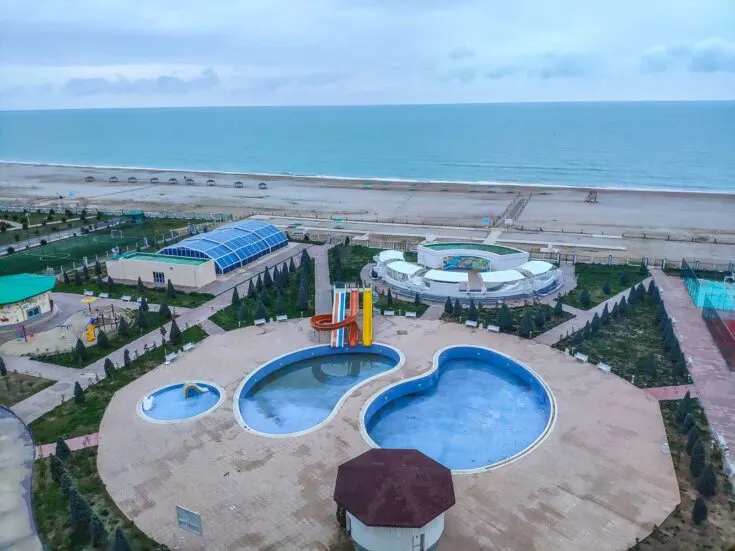
This area has a strong Russian influence and overall a very luxurious and more high-quality environment. For those looking to relax in luxury while in Turkmenistan, this is the place for you.
What is Turkmenistan Famous for?
The first thing that comes to mind about Turkmenistan is its interesting government, but there is more when it comes to tourism in Turkmenistan so let’s take a look.
Darvaza Gas Crater
The famous ‘ Gate of Hell’ is in Turkmenistan . Locally known as the Darvaza gas crater, it is a man-made crater in the desert that is continuously on fire.
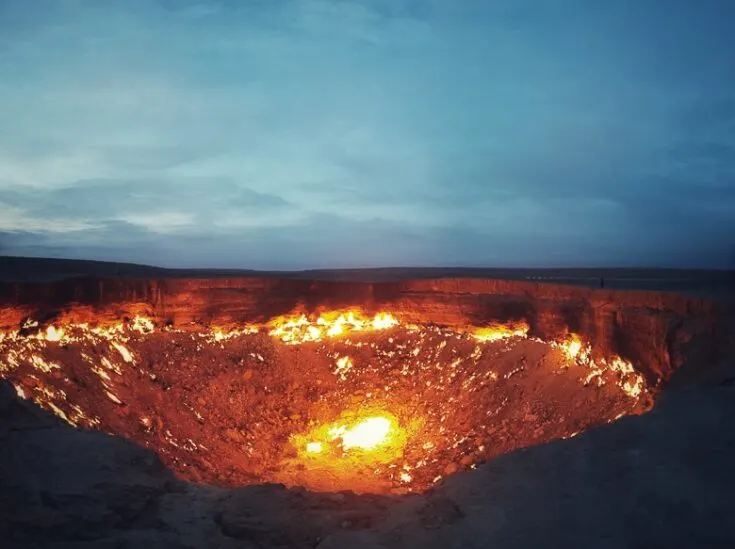
The Gate of hell Turkmenistan was created by mistake in 1971 when a Soviet drilling rig accidentally punched into a massive underground natural gas cavern.
This caused the ground to collapse and the entire drilling rig to fall in. You can still see the old metal pipes sticking out of the ground in the crater.
Almost 50 years on, and geologists still have no idea how much longer it will burn for. It might die out tomorrow, or it might burn for another 100 years; nobody knows.
Taking a trip to see it at night is a must when the fires flare up and give a stark contrast to the sheer darkness of the desert.
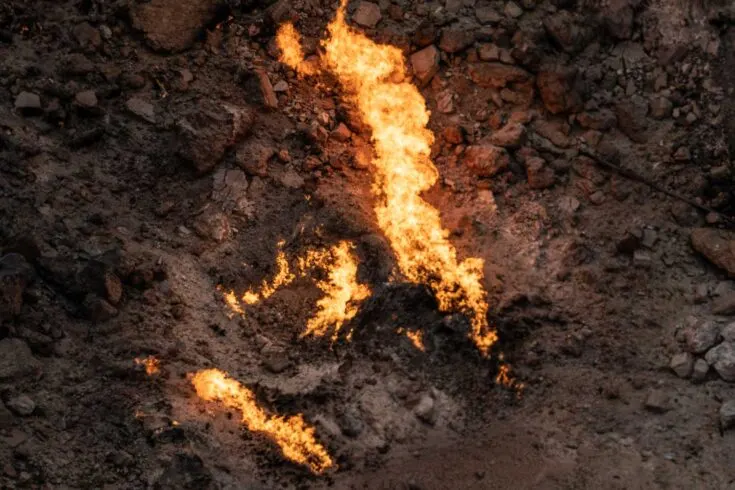
Silk Road Cities
The ancient city of Merv is one of Turkmenistan’s Silk Road contributions. It is a massive urban center that is the largest on Silk Road. This is an oasis of a city that is a UNESCO site, with another city, Kunya-Urgench, being another UNESCO site.
The City Center is Made of Marble
Ashgabat is unique in that a majority of the structures and public areas are built with white marble. It actually holds a Guinness World Record for having the highest density of buildings made of marble in the world.
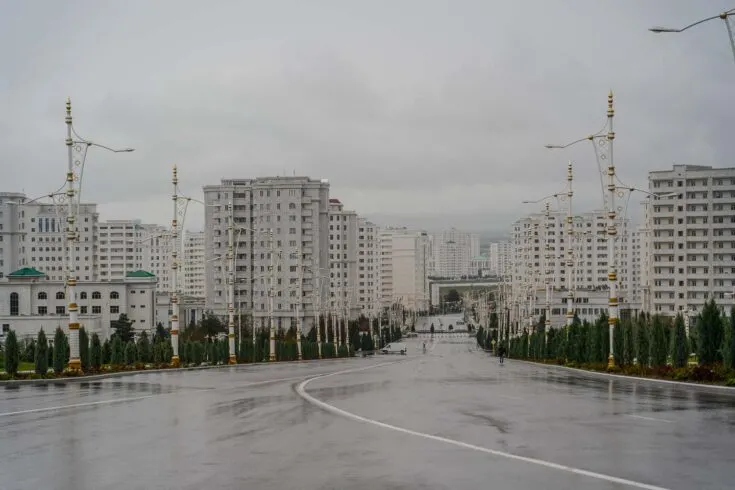
There are no big billboards with commercials anywhere in the city, and best of all, there’s no Starbucks, no KFC, no Mcdonalds, etc. Only small, locally owned businesses here.
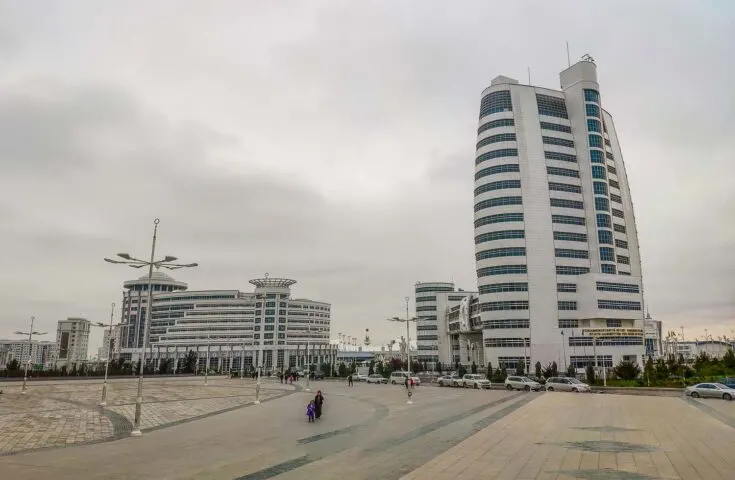
But the few tourists that make it to Ashgabat will see a city that is extremely well-organized with an easy bus system, and it’s also probably the cleanest city anywhere in the world. Dirty cars are not even allowed in the city.
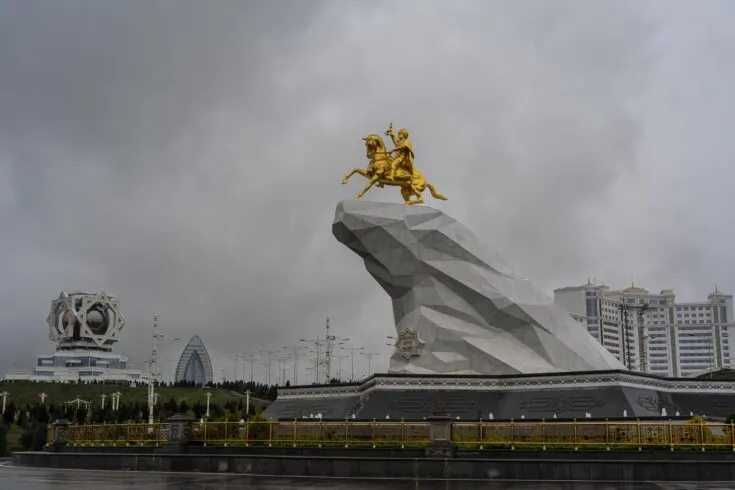
What Language do They Speak in Turkmenistan
An interesting fact about Turkmenistan is that it has three spoken languages and only one written one. Uzbek, Russian, and Turkmen are the different languages that you can speak while in Turkmenistan.
Turkmen is a member of the Turkic family of language. It is very similar to Turkish and is spoken in seven different dialects throughout the different provinces of the country. The sole written language, however, is Turkmen, so brushing up on a few key phrases is recommended.

Things You Should Pack to Visit Turkmenistan
Your luggage will depend on what time of the year you are planning to travel. If going in summer, you can expect high temperatures, so lightweight and breathable clothing, as well as your swimsuit, is essential. Winter is the complete opposite, and multiple layers of clothing that are also waterproof are needed.
For women, even though it is technically an Islamic country, it has a complicated relationship with its views, and so it’s not an unacceptable thing for you to show skin. Turkmenistan is, in fact, one of the most liberal Muslim countries in the world.
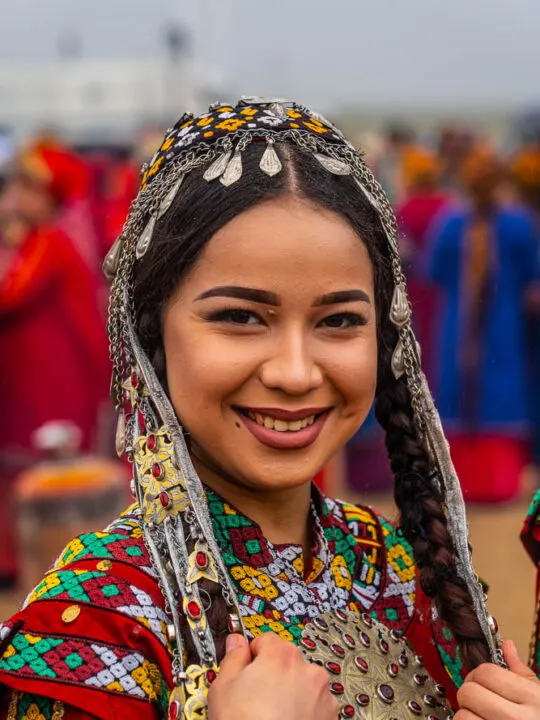
Essential medication is also a must as while there are pharmacies in major cities where you can get the basics, there is no access to any form of medication outside of these major areas.
However, don´t expect much shopping in Turkmenistan, while there’s a big fancy shopping mall with “everything” in Ashgabat, so is there not much when it comes to shopping outside the capital. Maybe the best thing to buy in Turkmenistan is locally woven carpets which are among the best in the world.
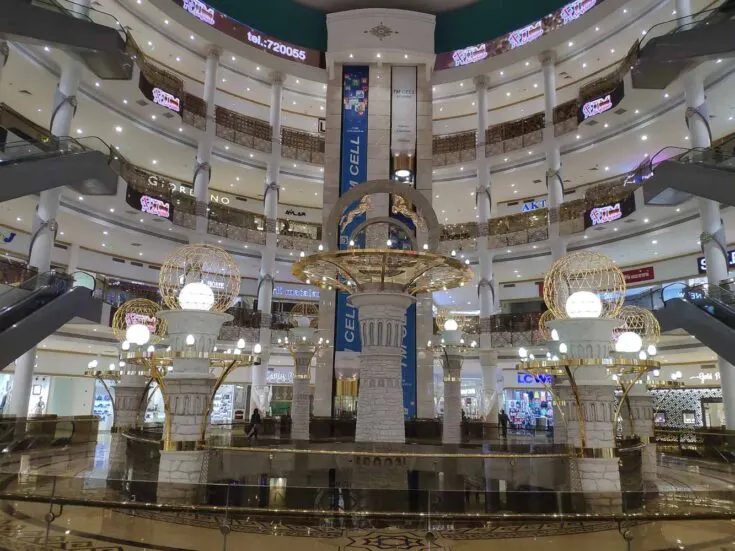
Trips to Turkmenistan Information
When it comes to tourism in Turkmenistan and planning your trip, there are a few things that you need to know to make sure that you are fully prepared for what lies ahead of you.
Getting Around Turkmenistan
If you make your own way into the country, then you only really have a train or taxi to use to get around.
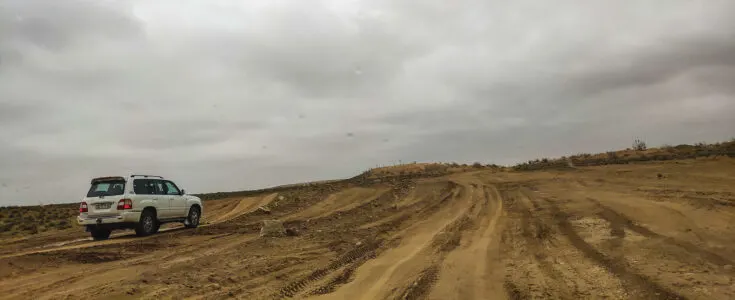
If you go with a tour guide, then you should be taken around in a 4×4 vehicle while exploring the country. There are buses, but there aren’t many at all.
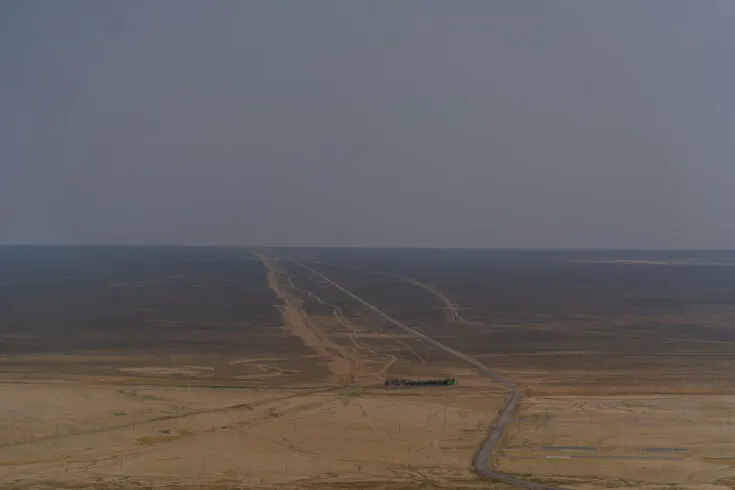
All three of those options are pretty cheap ways to get around, but winter does have an impact on the transportation system with interruptions to power supplies. The trains and buses are also slow, but at least they are reasonably comfortable.
But the fastest and cheapest way to get across Turkmenistan is by flying; domestic flights in Turkmenistan with the local airline Turkmenistan Airlines are subsidized by the government, making Turkmenistan probably the cheapest country in the world for local flights. My flight from Turkmenbashy to Ashgabat was only 7 USD.
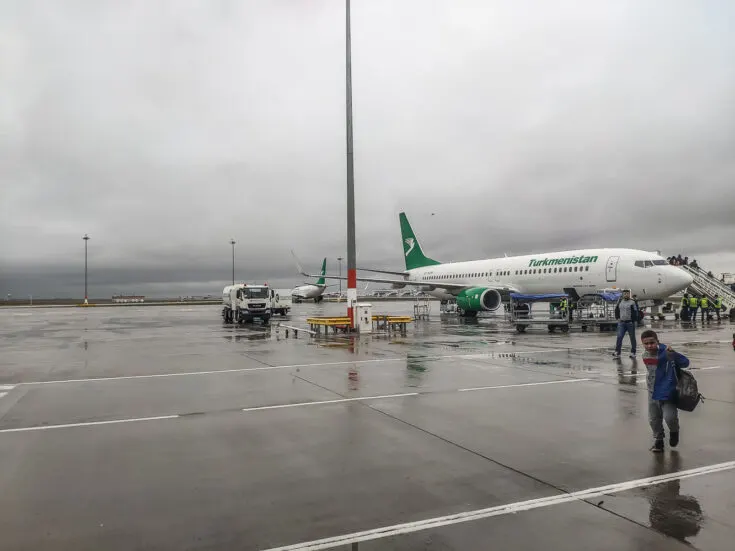
Money in Turkmenistan
The Manat is the main currency of Turkmenistan, while a single Manat is made of 100 Tenne. It is worth remembering that there are not that many ATMs at all. Don’t bank on using a card either, as cards will rarely be accepted by any store.
There are currency exchanges throughout, and they will happily change US Dollars and Euros into local Manat at a fixed rate and take no commission. They love to exchange US Dollars and prefer them, so bring various low denominations in cash, which you can exchange as you need in a small discrete bag .
The notes need to be in near perfect condition for them to be accepted, as any marked or damaged notes will not be accepted. You will be expected to settle your hotel bill in cash with US Dollars if you won’t use a credit card. All other payments will have to be made in cash.
NB. Changing money on the black market, (strictly illegal) will give you a much, much better rate, often three times the official rate.
Internet in Turkmenistan
Don’t expect too much internet while you visit Turkmenistan. The connection has always been a struggle, but the state also has strict laws on internet access and is heavily filtered. When you do gain access, your online activity will be monitored, and a large number of websites are blocked from access. If you thought the Great Firewall China or the internet in Eritrea was strict, then you haven’t been to Turkmenistan, even with a premium VPN, so was about every social media still blocked and unavailable, even WhatsApp, telegram, etc. was impossible to log into, even with a VPN. In general, there is wifi in the higher-end hotels in Balkanabat, Turkmenbashi, and Ashgabatand at most one old-school internet cafe in each city. But even in the high-end hotels, so is the internet connection extremely slow.
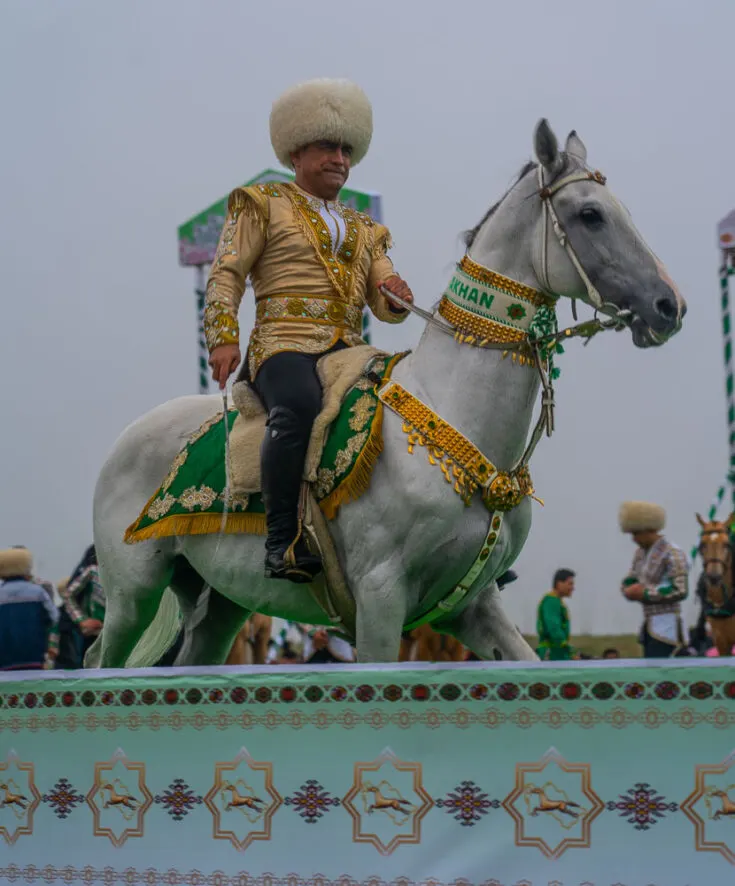
If you are looking for a social media or internet detox, then a Turkmenistan holiday isn’t a bad idea while exploring this unique country. Because while the first day it´s pretty frustrating with not being able to connect to the outside world, but after a few days, it feels actually good.
Safety in Turkmenistan
In general, Turkmenistan safety is considered to be good and a safe place to explore, but there are consequences of breaking the law. It is an authoritarian state and not widely known as a tourist hotspot. And criticizing the President is a serious offense. The standard safety precautions should be carried out as there is a crime, just like in any other major city.
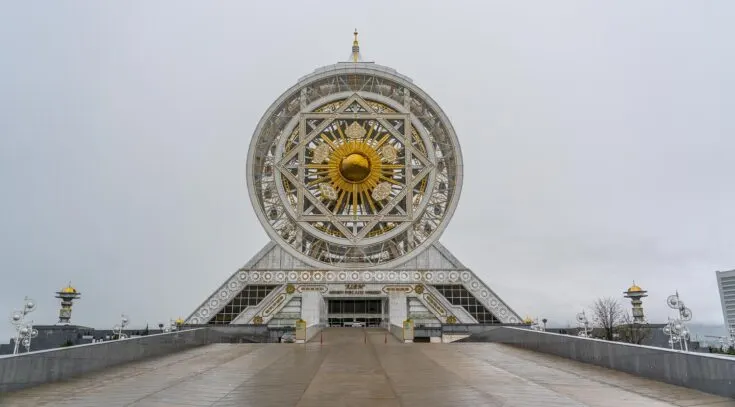
Seeing as that almost all sales are cash-driven, be careful with the amount that you carry on you at any given time and keep it in a discreet place. Going out alone, especially at night, is not recommended as the police can get a little suspicious. Also, don’t take any photographs of the military or any government buildings and markets.
And be aware there´s secret police everywhere, personally so did I get stopped 3 times by the secret police, once for taking a photo of the University in Asgahbat, the central market and just for walking down a random street, however, while the secret where polite, so are they strict and not open for discussion.
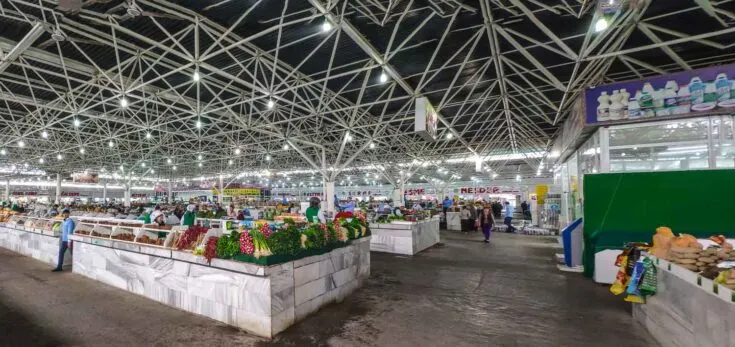
Electricity in Turkmenistan
Surprisingly, there is plenty of access to electricity throughout Turkmenistan, with most of the population receiving gas and electricity for free. However, it is pretty inefficient, and there have been reports of various problems with the supply of electricity. There are even problems with the heating in Ashgabat, not a nice thing to have to endure while visiting in winter.
The older power stations are heavily impacted by the weather so expect frequent blackouts in both the colder winter months and also in the warm summer months. Ensure that you always keep a bottle or two of water on you as the electricity going out in Ashgabat causes issues with the supply of water as well.
Drinks and Alcohol in Turkmenistan
Although it is a predominantly Muslim country, Turkmenistan is still somewhat liberal around the consumption of alcohol. There are, however, quite a few strict laws in Turkmenistan around the sale of alcohol. But is not often strictly enforced. About every restaurant and shop in the country offers at least beer. But to the surprise of many, so do Turkmenistan, produce their own, beer, vodka, wine, and brandy. Mainly that it cannot be consumed on public transport or in public areas of any kind. Beaches, forests, and elevators, as well as at any sporting facilities, are a few other areas.
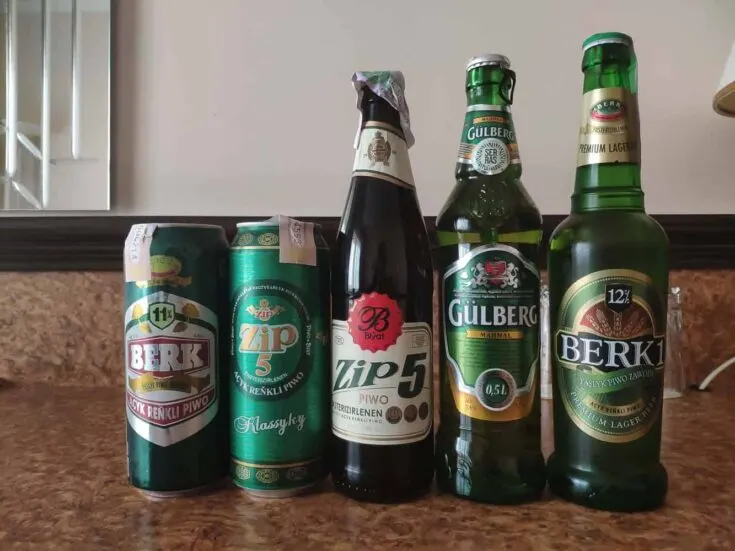
There is also a ban on the sale of alcohol on weekends from establishments that are not either bars or restaurants. But this rule doesn´t seem to be very strictly enforced. And there´s no shortage of bars and restaurants anywhere in Turkmenistan, so you don’t have to worry about staying “dry”. Beer is insanely popular and the drink of choice for almost everyone, even though it is pretty low in alcohol percentage. For all the wine lovers, there are some amazing local wines.
The Turkmenistan people also make stunning Brandy, and even vodka, believe it or not. Start your night off over a few bottles of Tac Premium beer, and then maybe sample some brandy after that.
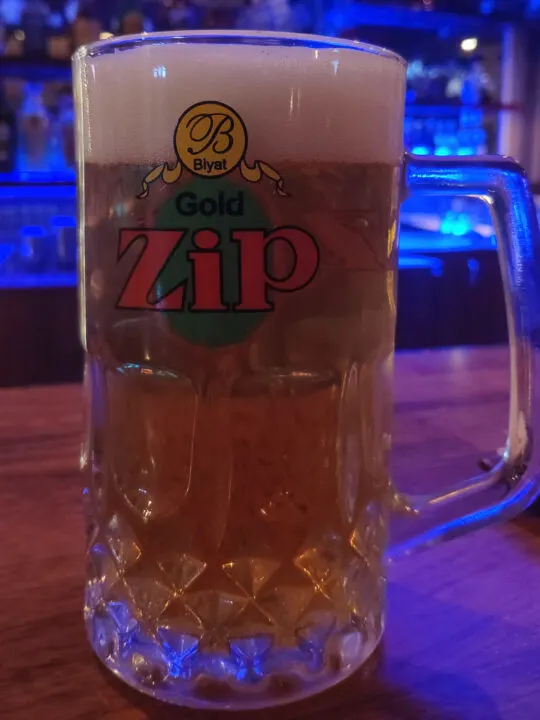
When Will you Travel to Turkmenistan?
There are surely a ton of interesting facts about Turkmenistan. But, if you are ready to pay the high price and go through the hassle to obtain a visa, Turkmenistan has a lot to offer. From three historical UNESCO World Heritage sites, two of the strangest natural sites in the world, and a one-of-a-kind capital covered with white marble.
There are gold statues and a lot of obscure monuments and strange architecture to add even more reasons to travel here. So the question remains, when will you travel to Turkmenistan?
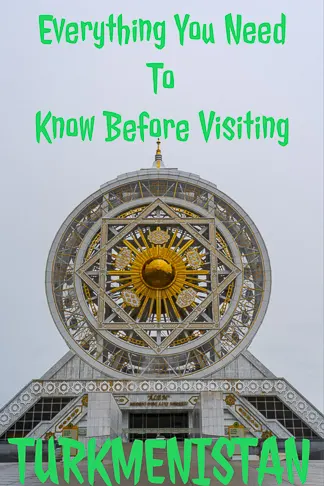
Thursday 23rd of December 2021
Thx for the report. I have been twice in Turkmenistan ( 2006 and 2017). strange but interesting country to visit.
Dark Tourism: When Travel And Tragedy Meet
Have you ever considered adding a "dark" attraction to your travels? Here’s why some people are interested in it.
Madeline Holly-Carothers • Mar 27, 2024

Death, disaster, tragedy, and atrocity are four words commonly associated with dark tourism.
Becoming a dark tourist is a controversial, and complex type of travel that some people consider no different than historical tourism while others see it as taboo or worse: unethical. And while many people might be hesitant to fill their vacation itinerary with stops dedicated to grief, disaster, or other not-so-pleasant happenings, the trend of dark tourism is on the rise.
Mainstream Darkness
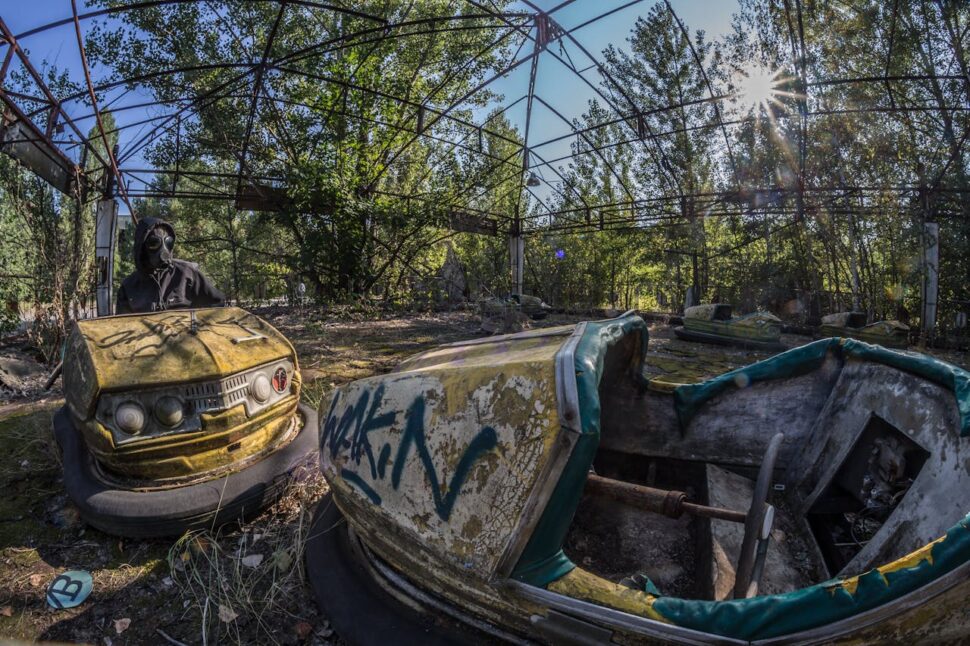
Dark tourism has almost always been a travel concept, even before it had an official name. People have long been fascinated by sights of disaster and death. In 2018, Netflix’s docuseries “Dark Tourist” premiered and the term “dark tourism” became more widely known.
In the series, the host visited several dark tourism sites around the world, including a t our in Milwaukee, Wisconsin , dedicated to Jeffrey Dahmer; a tour in Dallas focused on the assassination of President John F. Kennedy; a nearly-empty city in Myanmar; and a supposed vampire meeting in New Orleans, among others.
In another episode, the host visited Medellin, Colombia , and toured sites associated with a famous cartel leader in the 80’s and early 90’s.
The show brought the concept of dark tourism to mainstream media and allowed some people to consider the possibility of adding dark tourism to their itineraries.
Though much of dark tourism is centered around historical and cultural significance, an argument can be made for why it’s unethical and even dangerous.
A Question of Ethics

Many sites highlighted as dark tourism hot spots, like the tour in Milwaukee, can be viewed as disrespectful. Tourists eagerly visiting sites associated with Jeffrey Dahmer, can be considered making light of the atrocities he committed and disrespecting the memory of the victims.
Additionally, visiting Medellin can be disruptive to the community still there and potentially bring negative attention to the area that the community might be trying to move past.
There are also inherent dangers with some versions of dark tourism. One popular type of dark tourism is visiting sites of natural disasters, like the nuclear fallout in Fukushima, Japan. In 2011, a tsunami caused a nearby nuclear power plant to malfunction and unleashed a deadly nuclear disaster.
Today, there are tours available that take tourists to the area and see it. But there’s one major problem: the area is still somewhat radioactive and could pose a threat to human health.
Weighing the Options
Dark tourism, on the one hand, can help tourists get a better, first-person understanding of historical landmarks or happenings. Some people even argue that it helps people to honor victims or survivors of tragedy by keeping whatever occurred at the forefront of people’s minds.
On the other hand, though, it can be viewed as disruptive or disrespectful. Choosing whether to add a “dark” attraction to your next trip is purely up to you, but travelers should weigh the pros and cons carefully before deciding.
Subscribe to travel noire
Get more travel content
Subscribe to Travel Noire, a free daily newsletter that features the best of travel, destinations, and guides to the cities you love from a new point of view — yours.
By subscribing to this newsletter, you agree to our terms of service and privacy policy.
Popular posts
Trending stories in world travel

Dark Tourist
From a nuclear lake to a haunted forest, journalist David Farrier visits unusual -- and often macabre -- tourism spots around the world.

Latin America
David meets Pablo Escobar's enforcer in Colombia. Later, he witnesses an exorcism in Mexico and participates in a faux illegal border crossing.

David visits a town hit by heavy radiation, hikes through a supposedly haunted forest and explores an abandoned island with its former residents.

United States
David meets a Jeffrey Dahmer enthusiast in Milwaukee, takes two tours dedicated to JFK's assassination in Dallas and dines with vampires in New Orleans.

In Kazakhstan, David and a fellow dark tourist swim in a lake formed by a nuclear blast. Later, David's trip to Turkmenistan doesn't go as planned.

After participating in a World War II reenactment, David visits a disturbing museum. He then travels to Cyprus in hopes of seeing a forbidden city.

South East Asia
In Cambodia, David is offered the chance to shoot a cow. Later, he tours Myanmar before witnessing the cleaning of a mummified corpse in Indonesia.

David attends a voodoo festival in Benin, visits an infamous area of Johannesburg and speaks with white South African separatists.

Back in the USA
Charles Manson's pen pal gets confrontational in an interview. Also, David prepares for the end of the world and visits an extreme haunted house.
More Details
More like this.

Coming Soon
Questions? Call 1-844-505-2993
- Help Centre
- Media Centre
- Investor Relations
- Netflix Shop
- Redeem gift cards
- Buy gift cards
- Ways to Watch
- Terms of Use
- Cookie Preferences
- Corporate Information
- Legal Guarantee
- Legal Notices
- Only on Netflix
- Advert choices
Netflix United Kingdom
- Cast & crew
- User reviews

Episode list
Dark tourist.

S1.E1 ∙ Latin America

S1.E2 ∙ Japan

S1.E3 ∙ United States

S1.E4 ∙ The Stans

S1.E5 ∙ Europe

S1.E6 ∙ South East Asia

S1.E7 ∙ Africa

S1.E8 ∙ Back in the USA
Contribute to this page.

- See more gaps
- Learn more about contributing
More from this title
More to explore.

Recently viewed

IMAGES
VIDEO
COMMENTS
Film-maker and 'dark tourist' David Farrier visited Turkmenistan's newly built capital, designed to cope with anything - as long as it's preplanned David Farrier Wed 8 Aug 2018 02.15 EDT ...
Dark Tourist. Season 1. Release year: 2018. From a nuclear lake to a haunted forest, journalist David Farrier visits unusual -- and often macabre -- tourism spots around the world. ... Later, David's trip to Turkmenistan doesn't go as planned. Europe 41m. After participating in a World War II reenactment, David visits a disturbing museum. He ...
For travel editor, Sarah-Kate Lynch, one of the positives of dark tourism is being able to make a connection to the past, in particular during a visit to the Sachsenhausen concentration camp near Berlin. "Instagram wasn't invented when I went," she explains, "but this memorial is not a place to smile and take selfies.
While still entertaining in its own right, Dark Tourist isn't the best travel documentary out there but it's still worth checking out. Verdict - 7/10. 7/10. Split across 8 episodes, Dark Tourist is an interesting, fascinating and often bizarre look at some of the off-the-beaten-track locales across the globe.
The Stans: Directed by Justin Hawkes, Zoe McIntosh. With David Farrier, Gurbanguly Berdimuhamedow, Andy Drury, Yuri Gagarin. In Kazakhstan, David and a fellow dark tourist swim in a lake formed by a nuclear blast. Later, David's trip to Turkmenistan doesn't go as planned.
Episode 4 of Netflix series Dark Tourist takes us to Kazakhstan for nuclear tourism, and Turkmenistan, one of the world's most paranoid governments.. Central Asia is known for its eccentric leaders, extreme corruption, and secrecy. As our Dark Tourist guide, David Farrier, tells us, it's perfect for any dark tourist.His first stop is Kazakhstan, which many Americans will only recognize due ...
Dark Tourist. In Kazakhstan, David and a fellow dark tourist swim in a lake formed by a nuclear blast. Later, David's trip to Turkmenistan doesn't go as planned. David visits a town hit by heavy radiation, hikes through a supposedly haunted forest and explores an abandoned island with its former residents.
Netflix. July 26, 2018. The host of Dark Tourist, David Farrier, is likened in the final episode of the new Netflix travel series to a kind of budget Louis Theroux, which he considers a compliment ...
Dark Tourism - the online travel guide to dark, unusual & weird places around the world. Dark Tourism - the guide to dark travel destinations around the world ... The currency of Turkmenistan is the Manat (1 Manat = 100 Tenge), which is roughly the equivalent of ca. 0.25 EUR (1 EUR = 4 TMT) as of May 2015. The former days of a black market rate ...
New Zealand's David Farrier takes Netflix viewers around the world on vacations too dark, blood-drenched, radiation-filled and tragedy-adjacent for the average holiday-goer in 'Dark Tourist.'
In Kazakhstan, David and a fellow dark tourist swim in a lake formed by a nuclear blast. Later, David's trip to Turkmenistan doesn't go as planned. Europe 41m. After participating in a World War II reenactment, David visits a disturbing museum. He then travels to Cyprus in hopes of seeing a forbidden city.
5. The Aral Sea, Uzbekistan/Kazakhstan. Another of the man made disaster sites and dark tourism places is located in neighbouring Uzbekistan. And once again it falls back to the period of the Soviet Era. Located in two countries, Kazakhstan and Uzbekistan, the Aral Sea was once one of the largest lakes in the world.
The definition of "tourism" is redefined as New Zealand filmmaker David Farrier, who journeyed into the darkest corners of the internet in the hit 2016 docum...
The term 'dark tourism' is far newer than the practice, which long predates Pompeii's emergence as a morbid attraction. Stone considers the Roman Colosseum to be one of the first dark tourist ...
The definition of "tourism" is redefined as New Zealand filmmaker David Farrier sets his sights on the world of dark tourism. From nuclear tourism in Japan to Pablo Escobar-inspired tourism in Columbia to frontier tourism in Turkmenistan, David visits the world's grisly and offbeat destinations, meeting travelers drawn to them, and the people telling these stories day after day.
Places to Visit in Turkmenistan - Tourist Attractions. 7. Darvaza Gas Crater "The Door to Hell". Probably the most famous Turkmenistan tourist attraction, the Darvaza Gas Crater is a large, fiery pit in the middle of the desert. In 1971 the soviets drilled for oil and instead came upon a natural gas field.
Turkmenistan deserves a place all of its own on any dark tourist's list thanks to the strange city of Ashgabat and the bizarre laws still in place in this reclusive former soviet republic. The country is made up of 90% desert, and hidden deep within is a huge flaming sinkhole that has been burning for over 40 years.
Visa for Turkmenistan Travel. The visa process to gain entry to Turkmenistan is strict, to say the least. ... There´s a small changing area at the lake, but the whole area is really dark without any safety guards or life jackets if someone gets into problems in the water. View over the area from the cave entrance.
4/10. One dimensional host. dilanchangela 28 July 2018. To echo several other reviews, great concept, but truly lousy and one dimensional host. Every one of David's narrative sentences focusses solely on himself- what he thinks, what he is doing, what he believes. Almost like he's on a quest for quick fame and recognition.
Death, disaster, tragedy, and atrocity are four words commonly associated with dark tourism. Becoming a dark tourist is a controversial, and complex type of travel that some people consider no different than historical tourism while others see it as taboo or worse: unethical. And while many people might be hesitant to fill their vacation ...
Dark Tourist. In Kazakhstan, David and a fellow dark tourist swim in a lake formed by a nuclear blast. Later, David's trip to Turkmenistan doesn't go as planned. David visits a town hit by heavy radiation, hikes through a supposedly haunted forest and explores an abandoned island with its former residents.
Dark Tourist. Season 1. Release year: 2018. From a nuclear lake to a haunted forest, journalist David Farrier visits unusual -- and often macabre -- tourism spots around the world. ... Later, David's trip to Turkmenistan doesn't go as planned. Europe 41m. After participating in a World War II reenactment, David visits a disturbing museum. He ...
David meets a Jeffrey Dahmer enthusiast in Milwaukee, takes two tours dedicated to JFK's assassination in Dallas and dines with vampires in New Orleans. S1, Ep4. 20 Jul. 2018. The Stans. 7.8(327) Rate. In Kazakhstan, David and a fellow dark tourist swim in a lake formed by a nuclear blast. Later, David's trip to Turkmenistan doesn't go as planned.